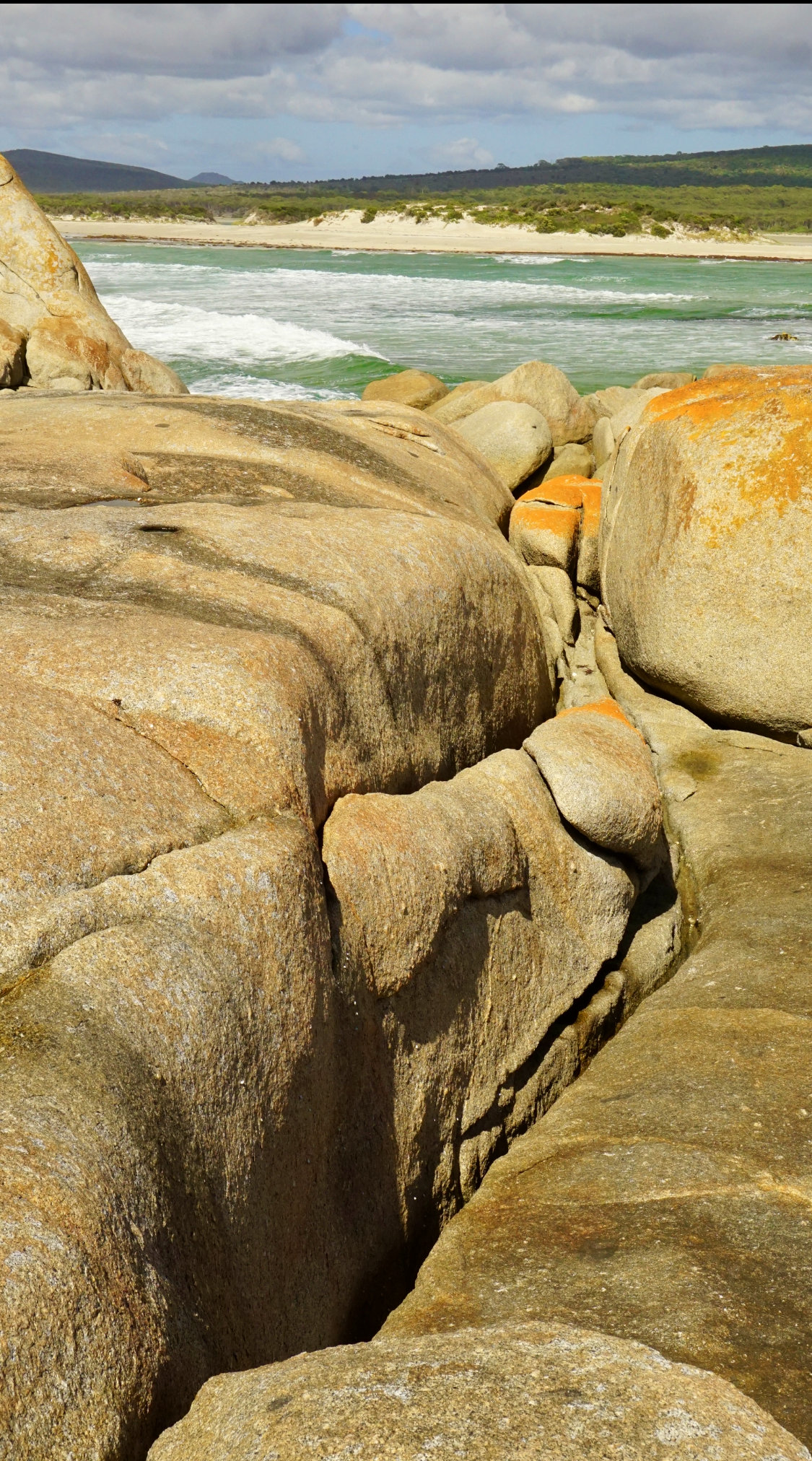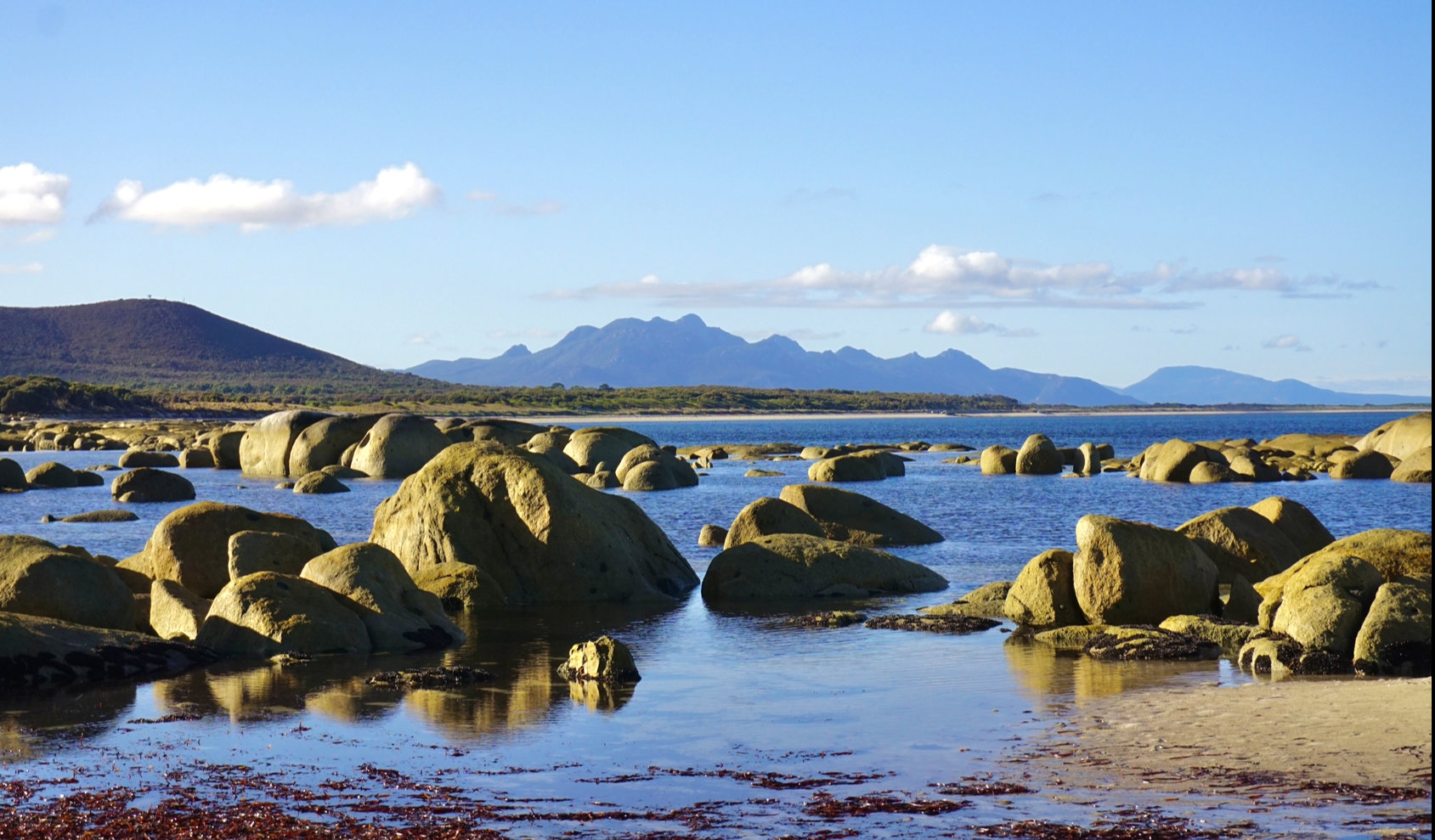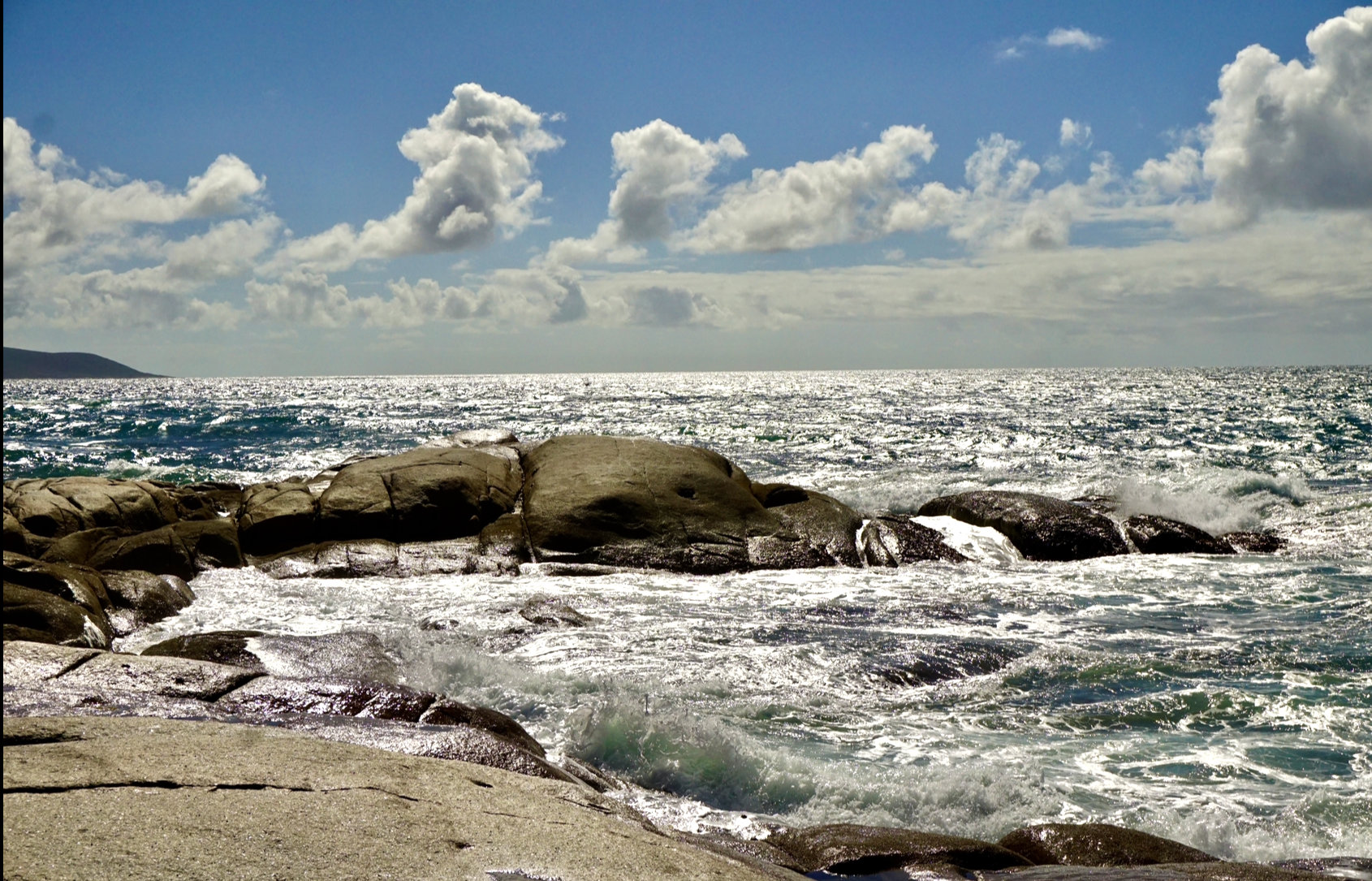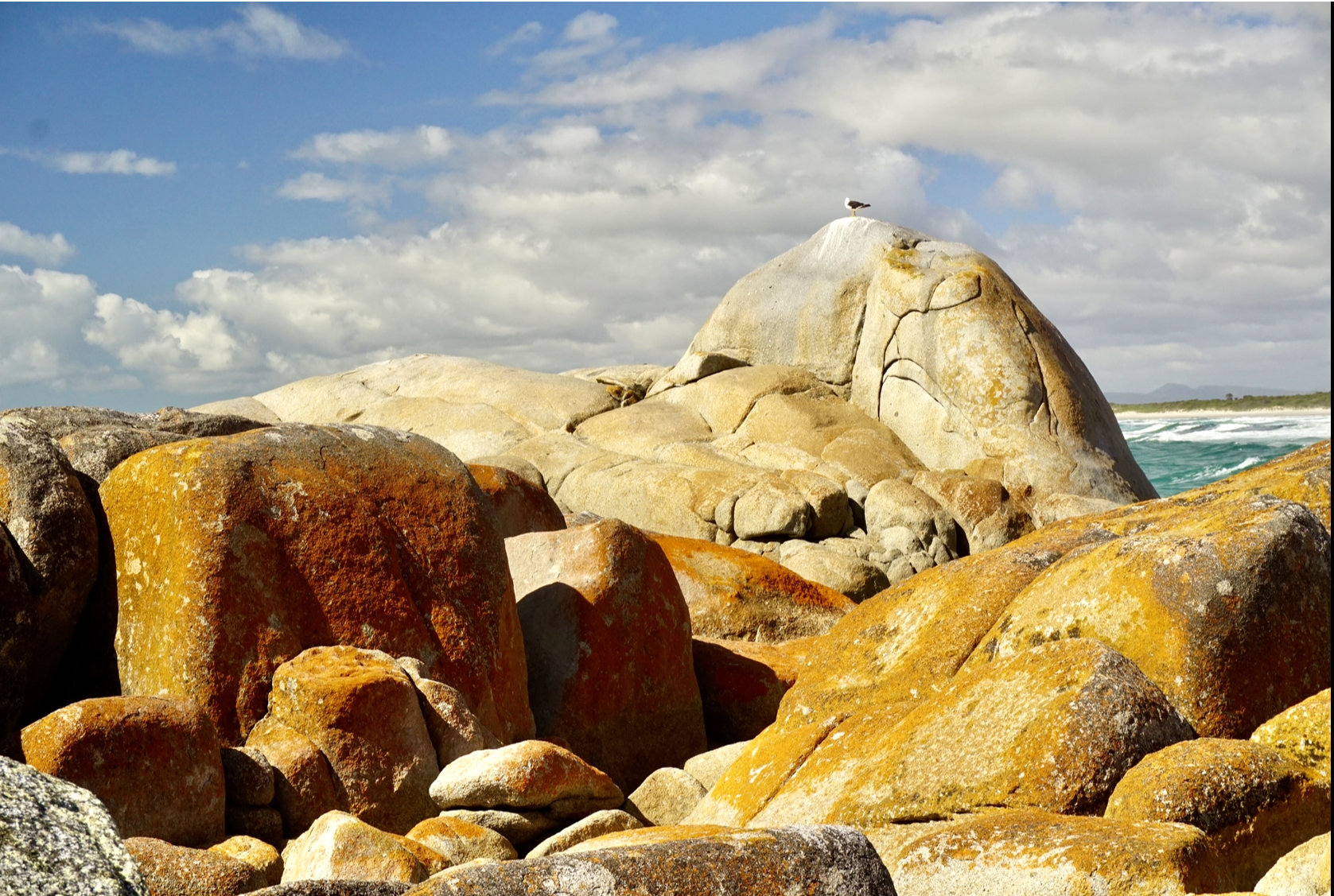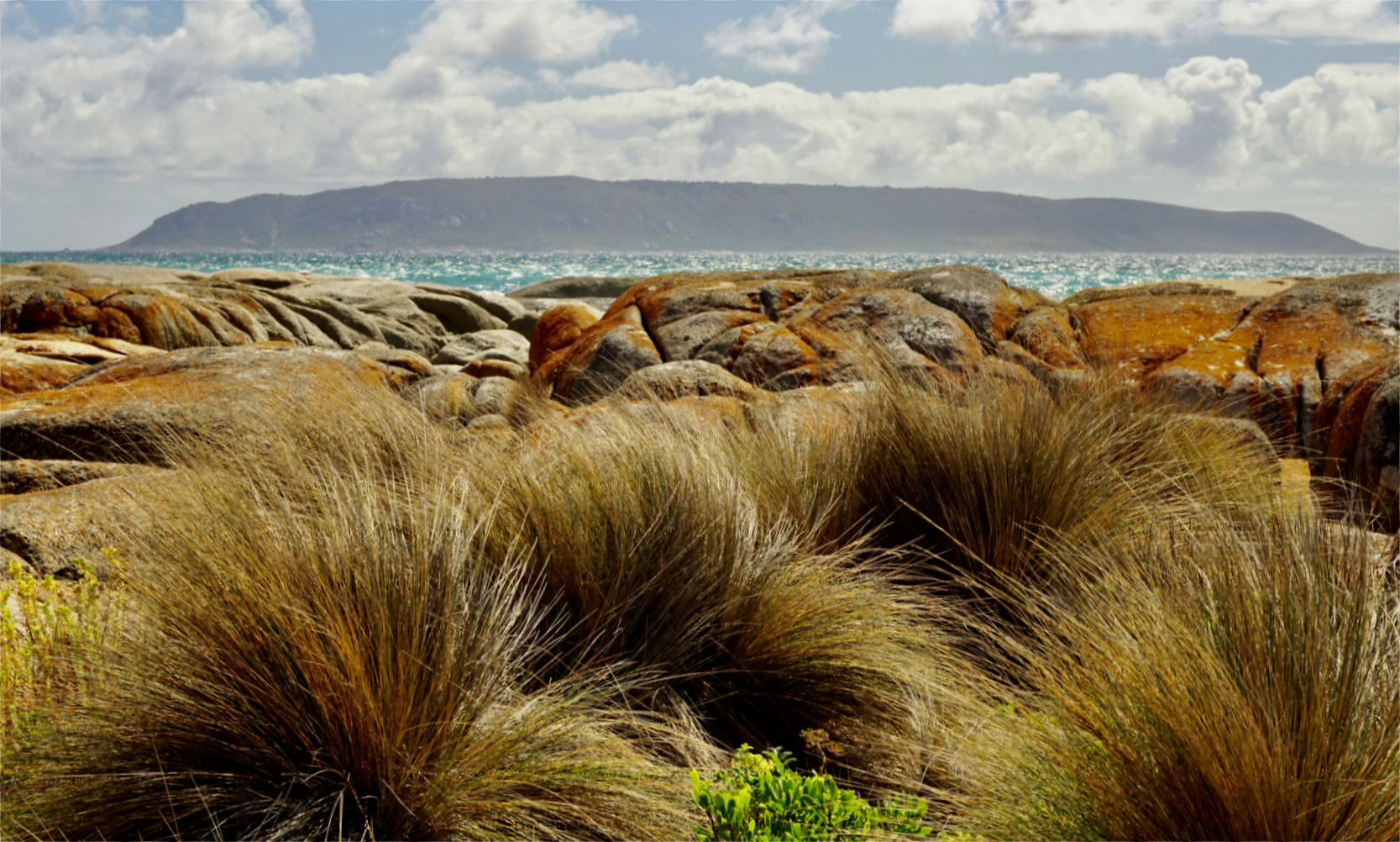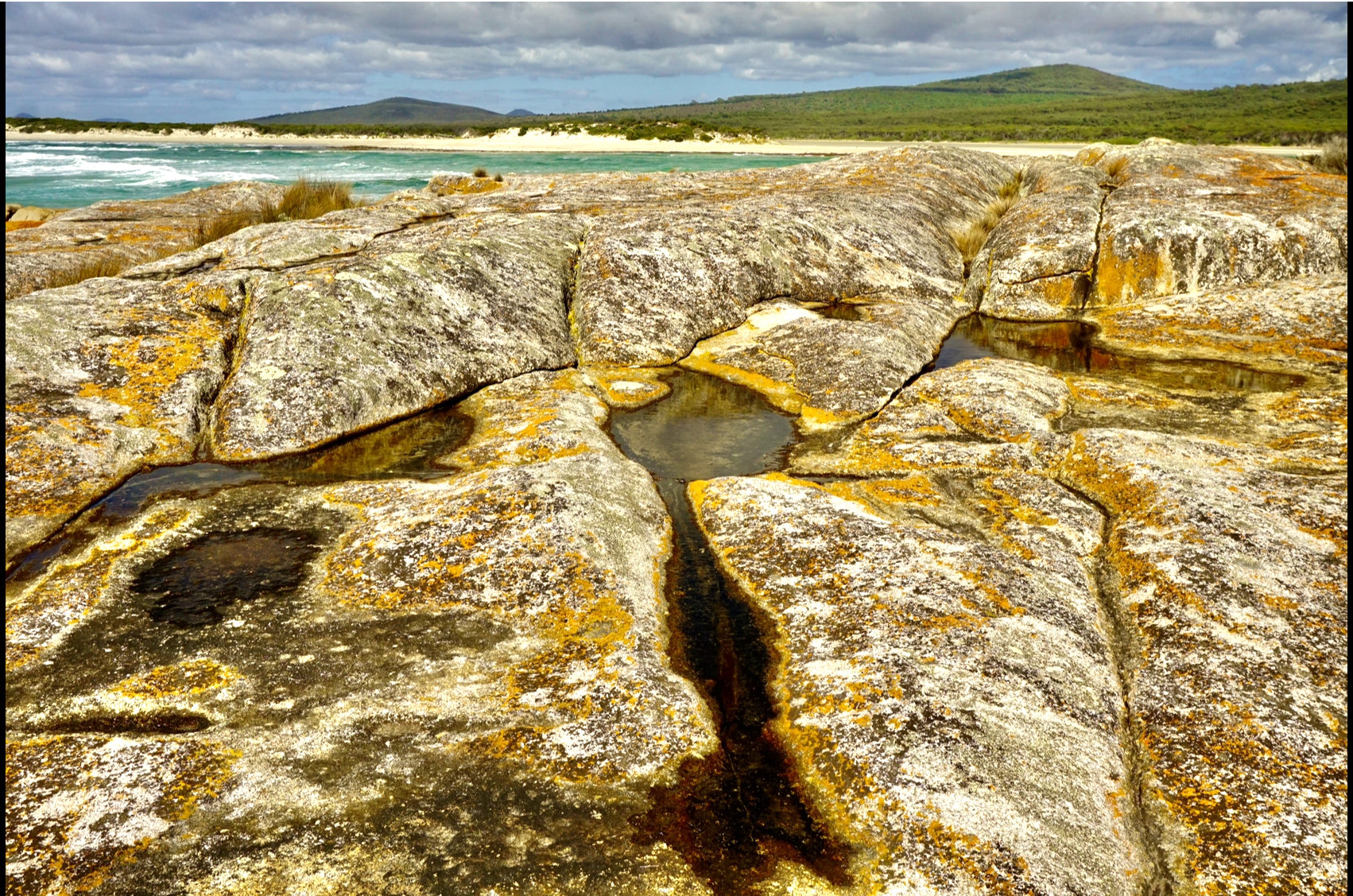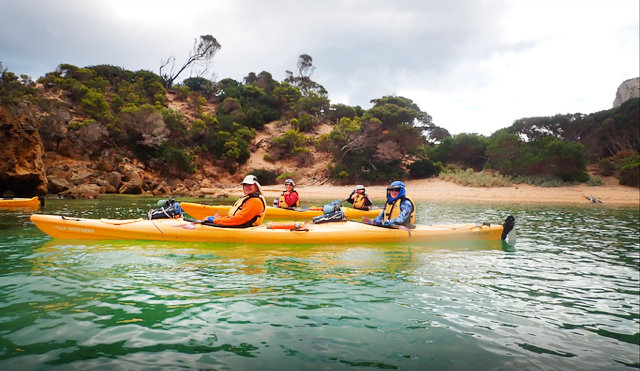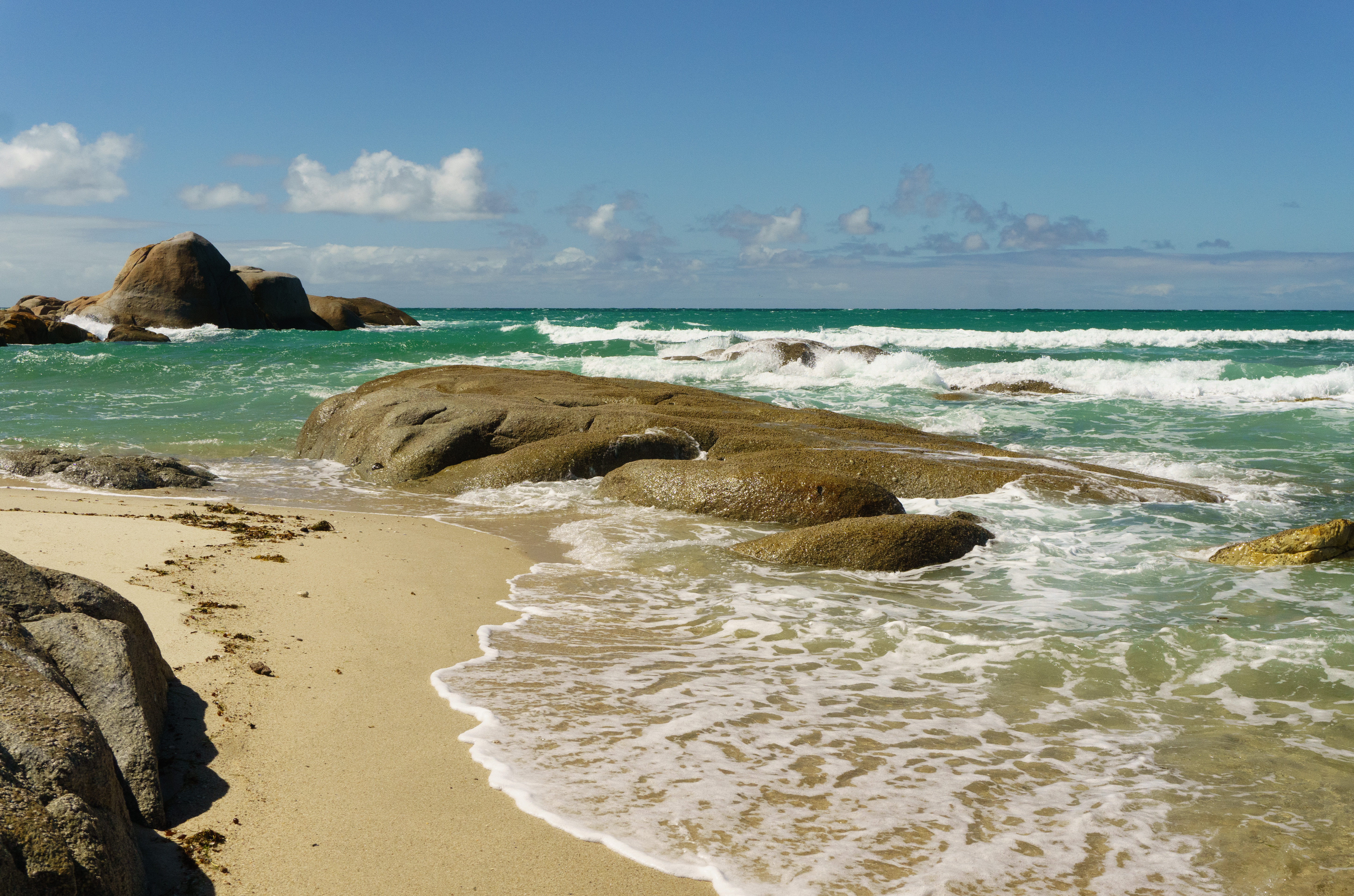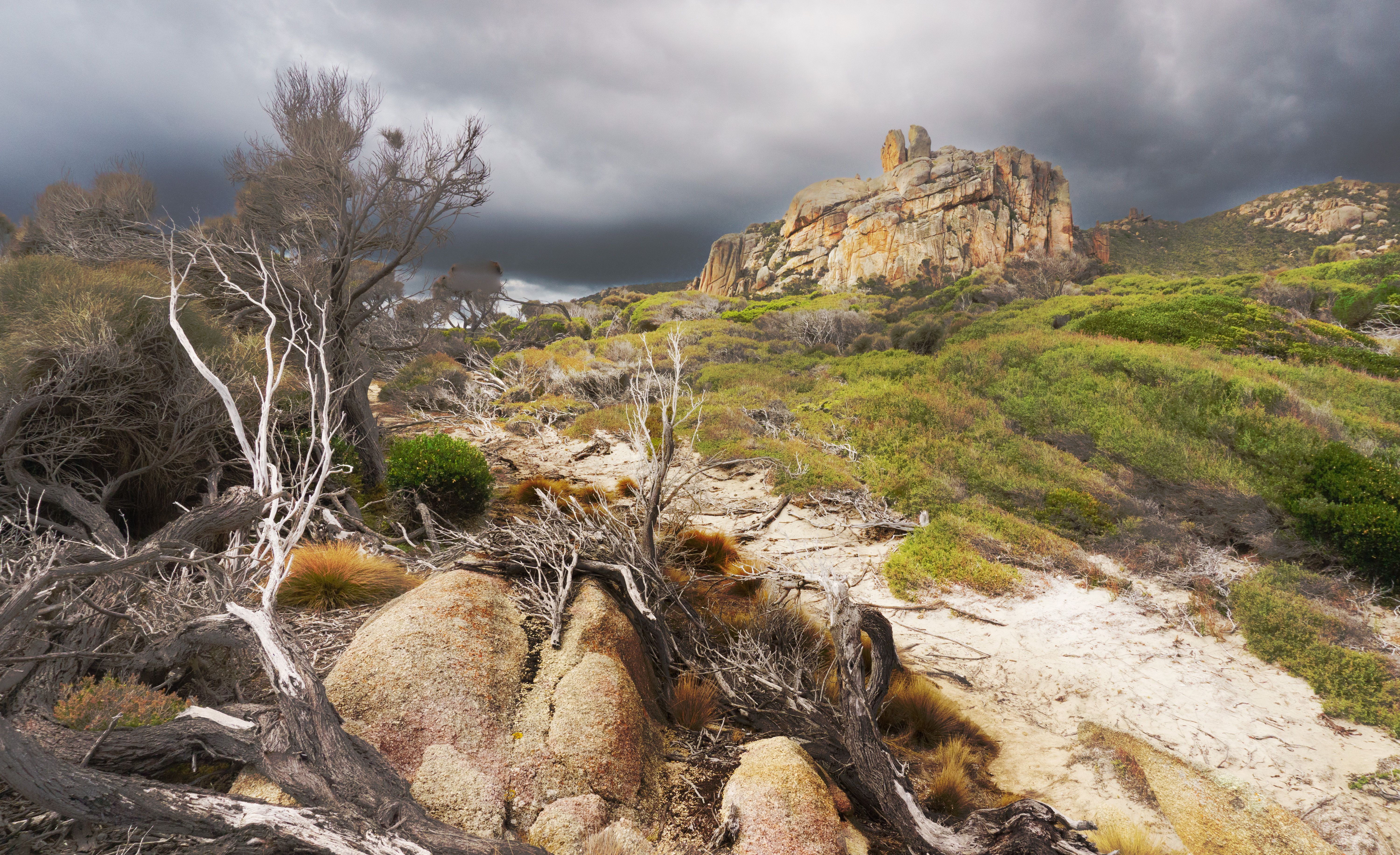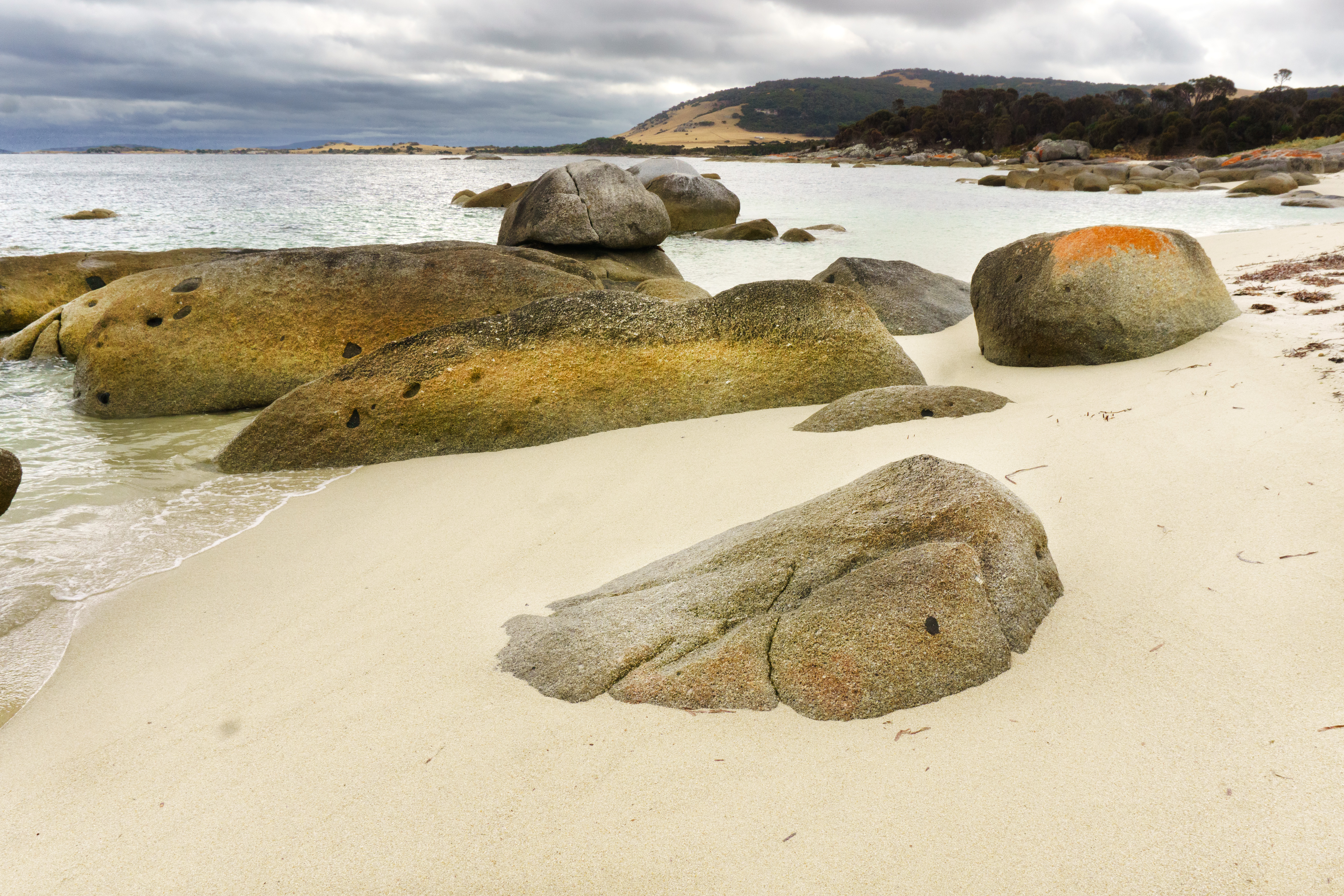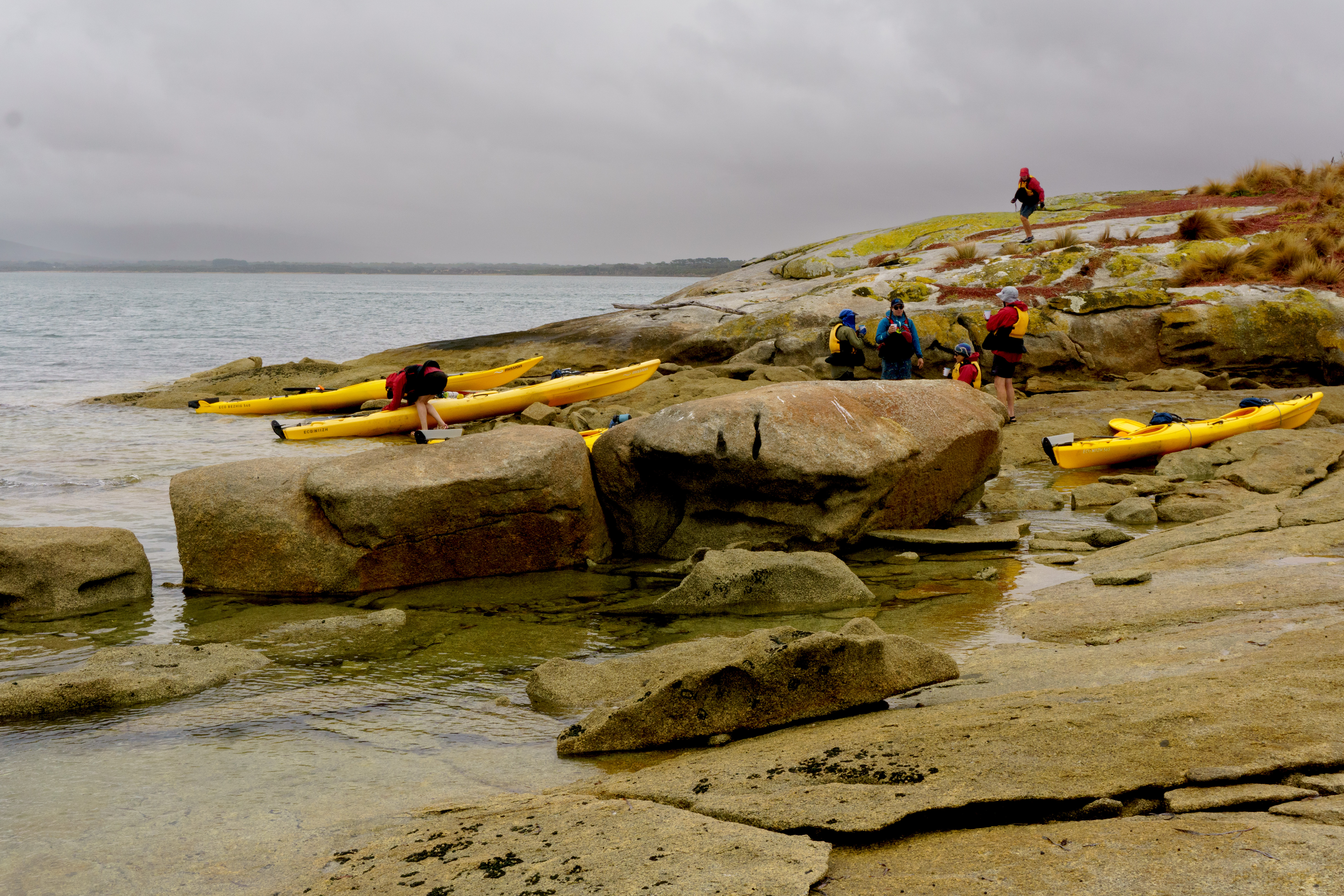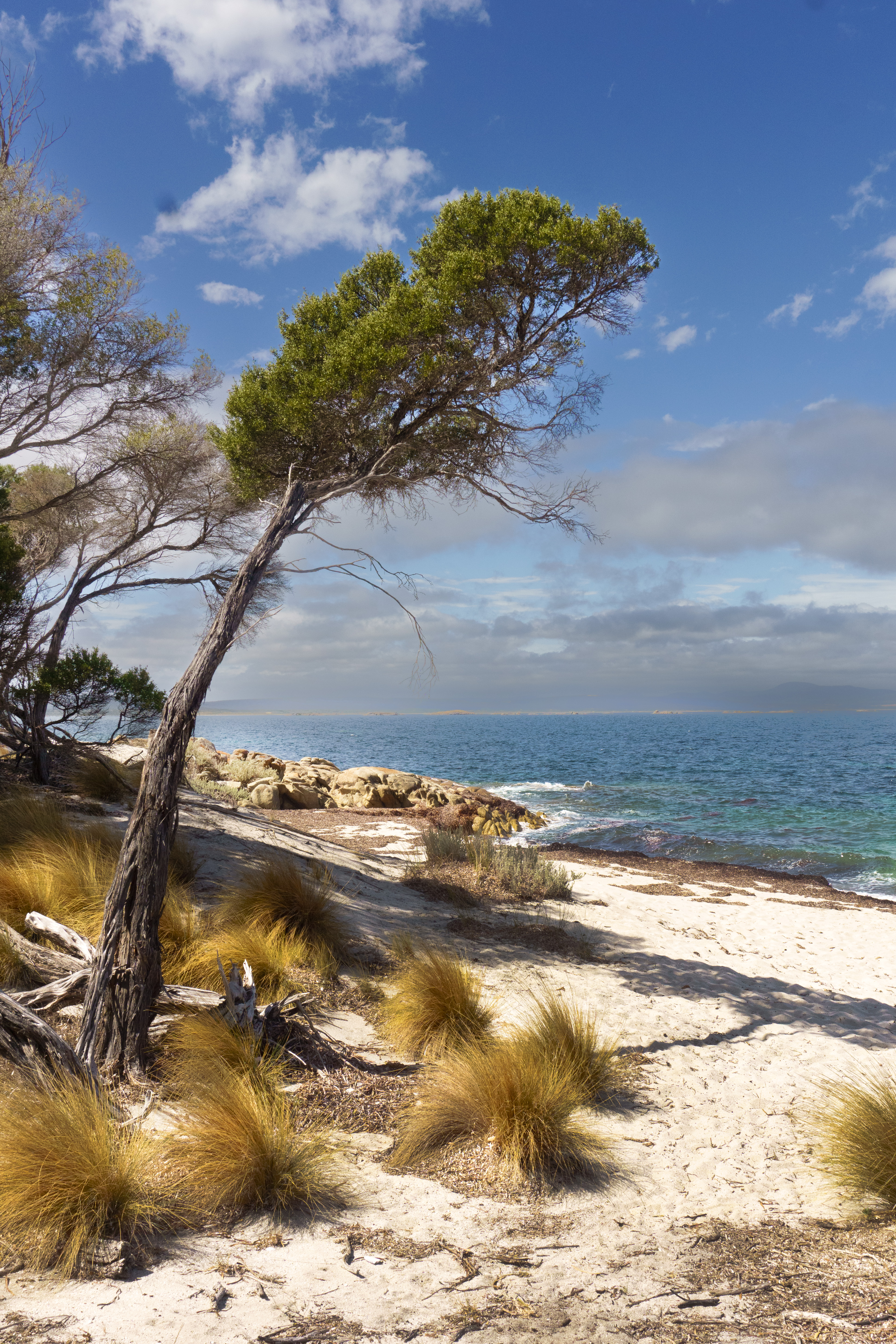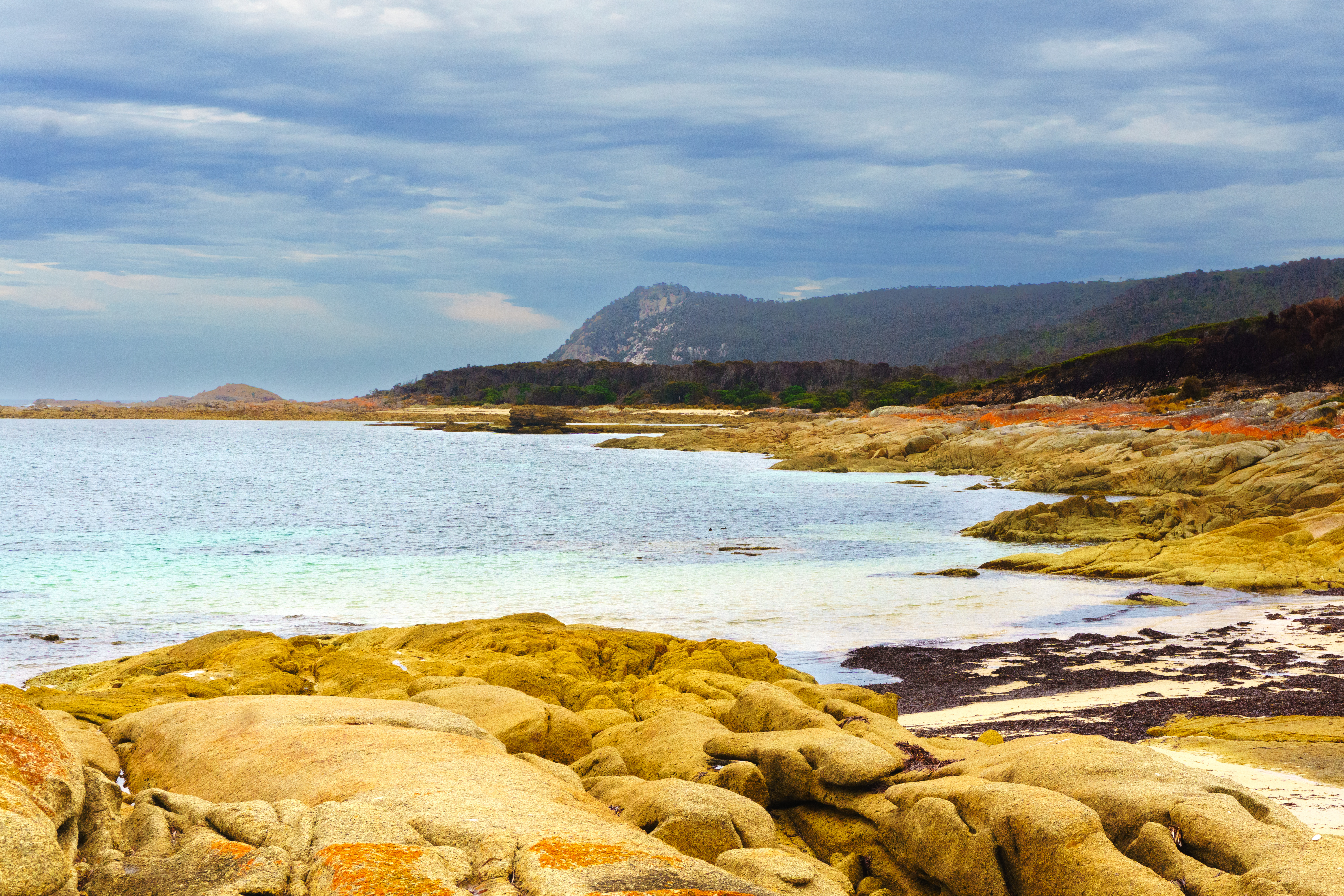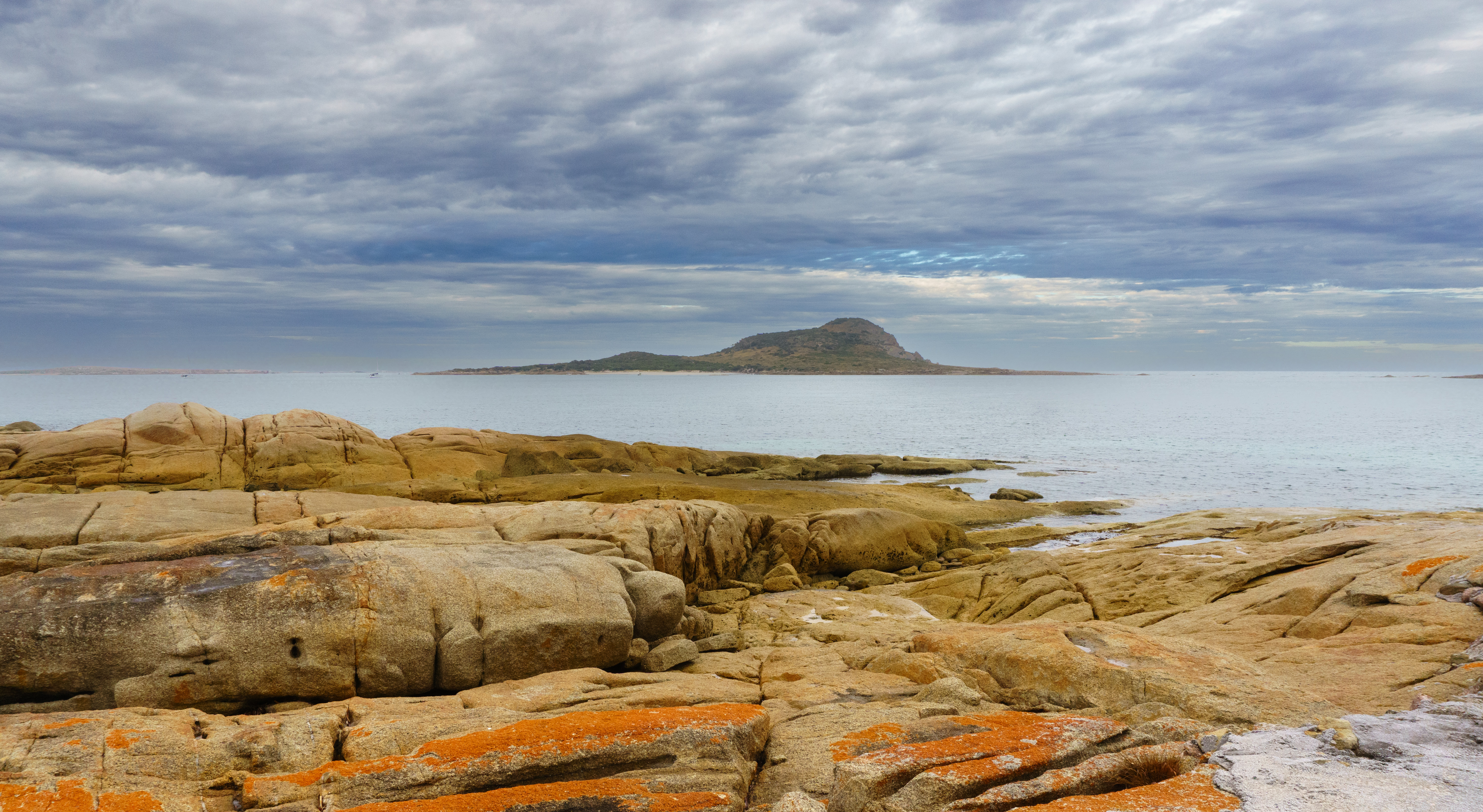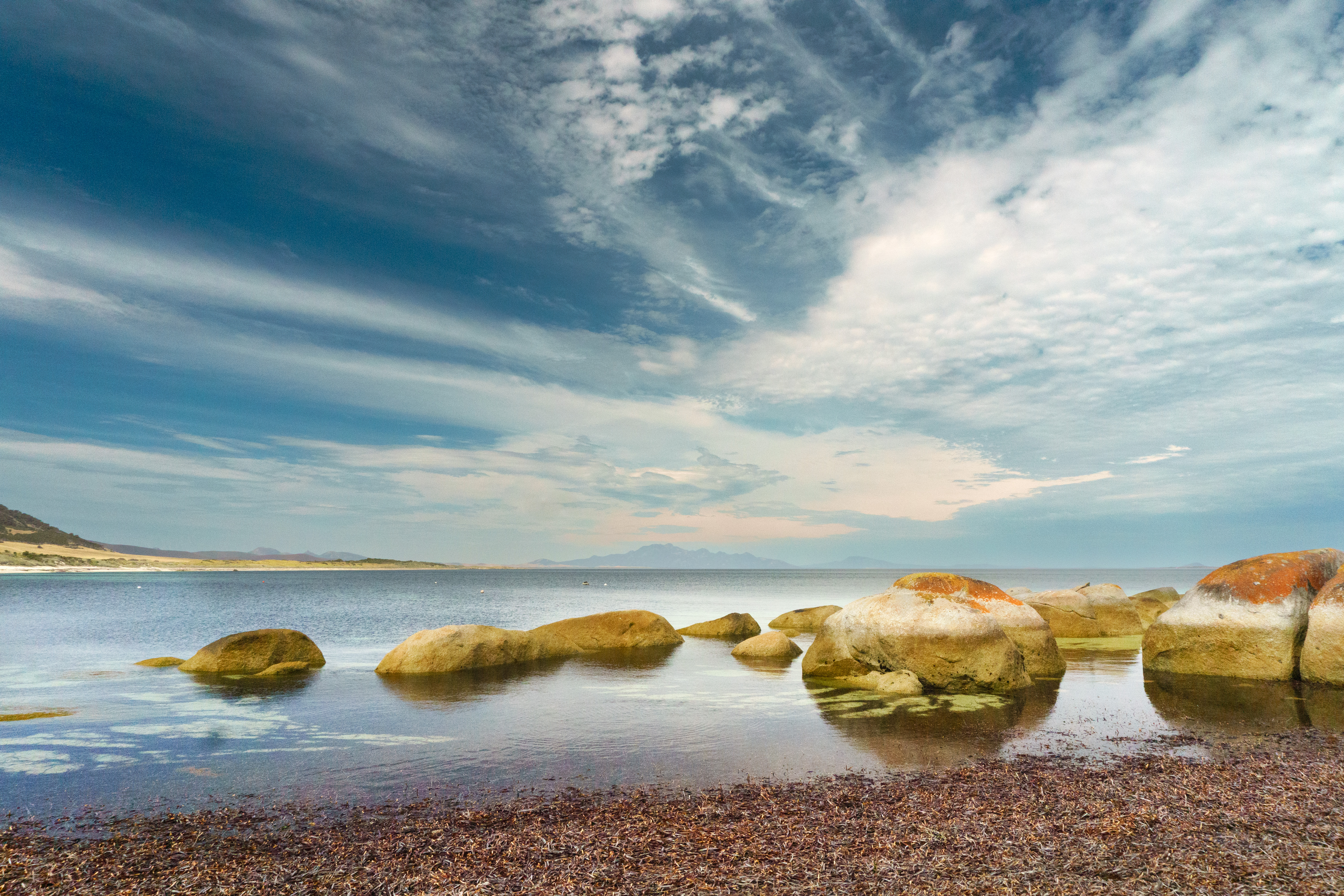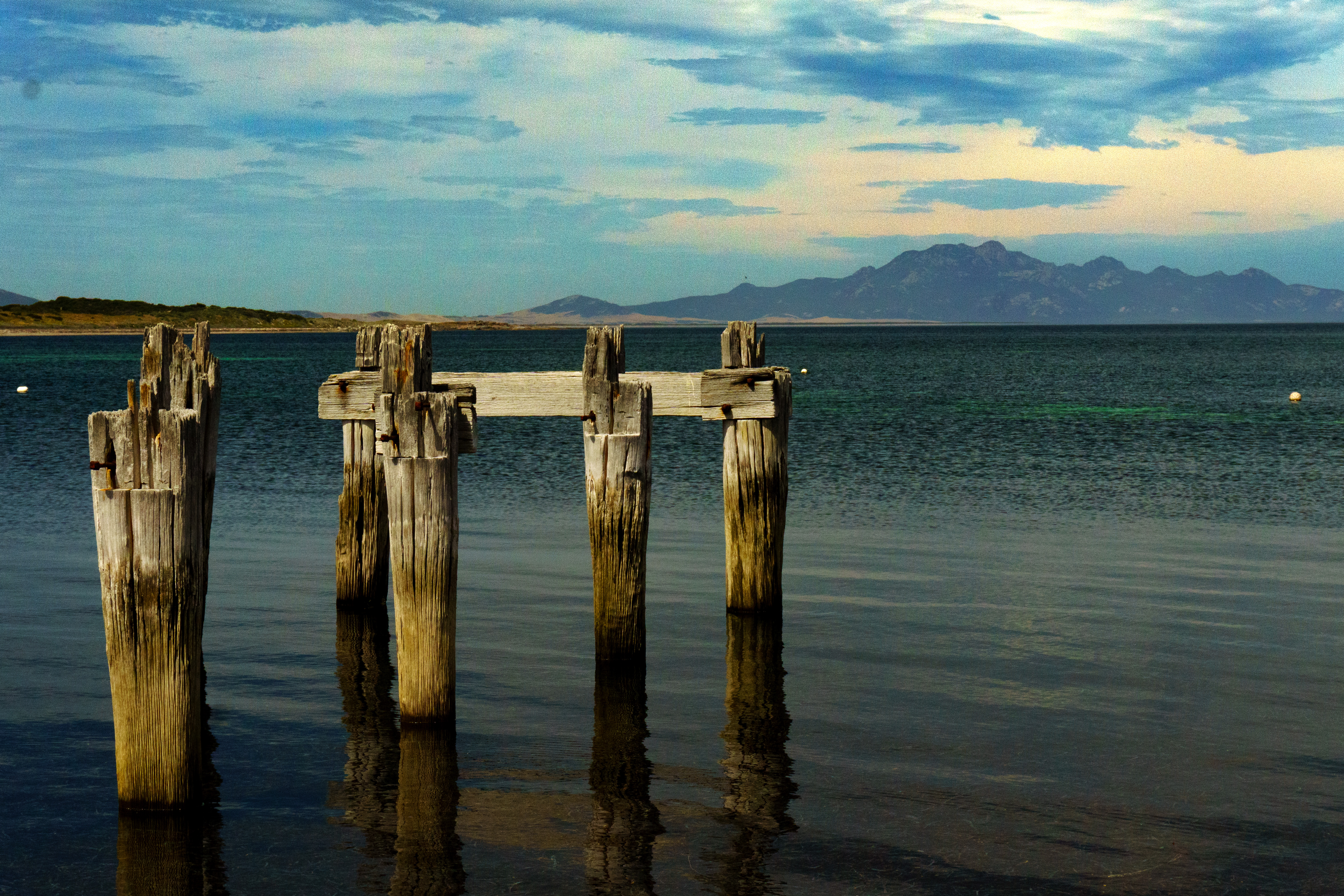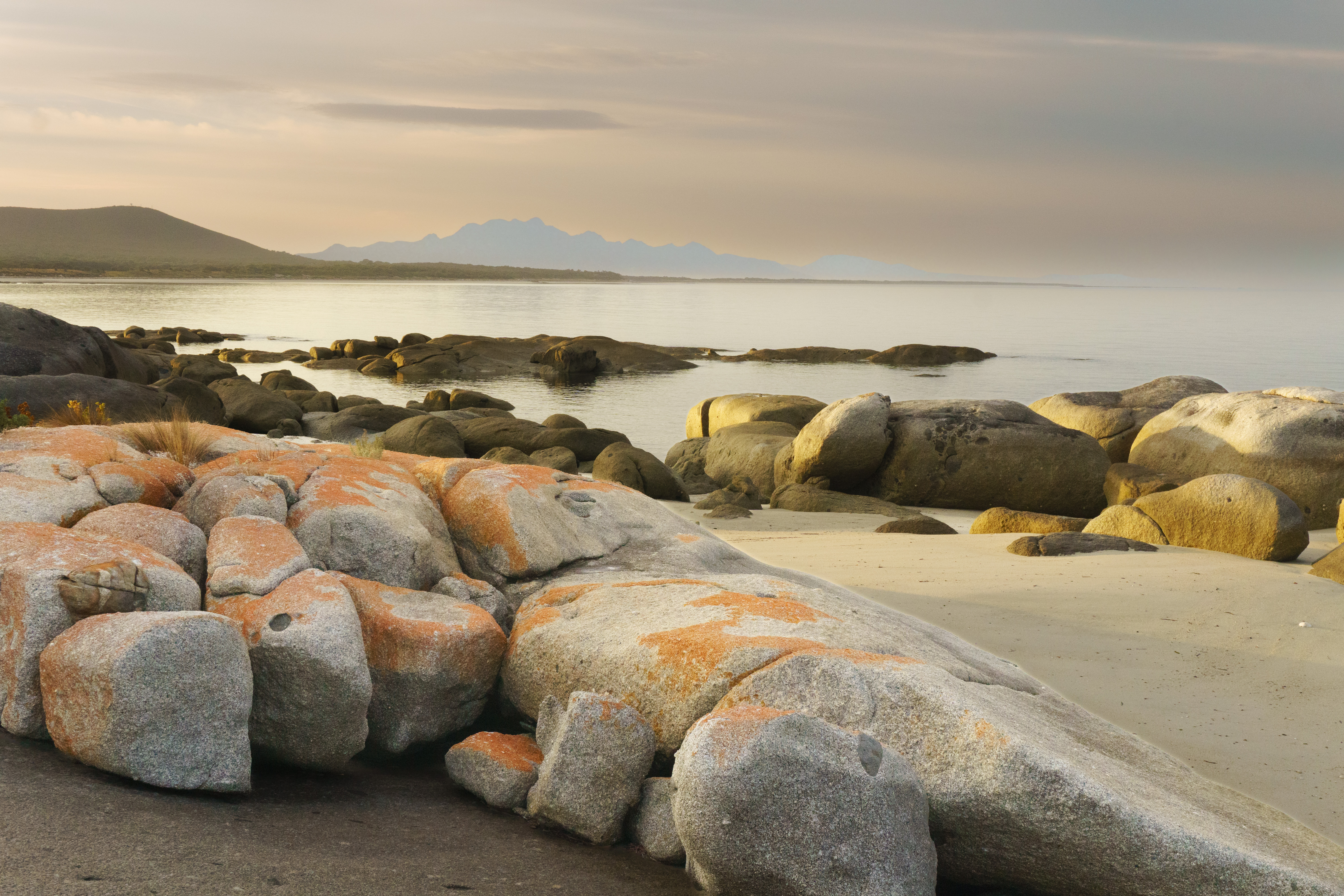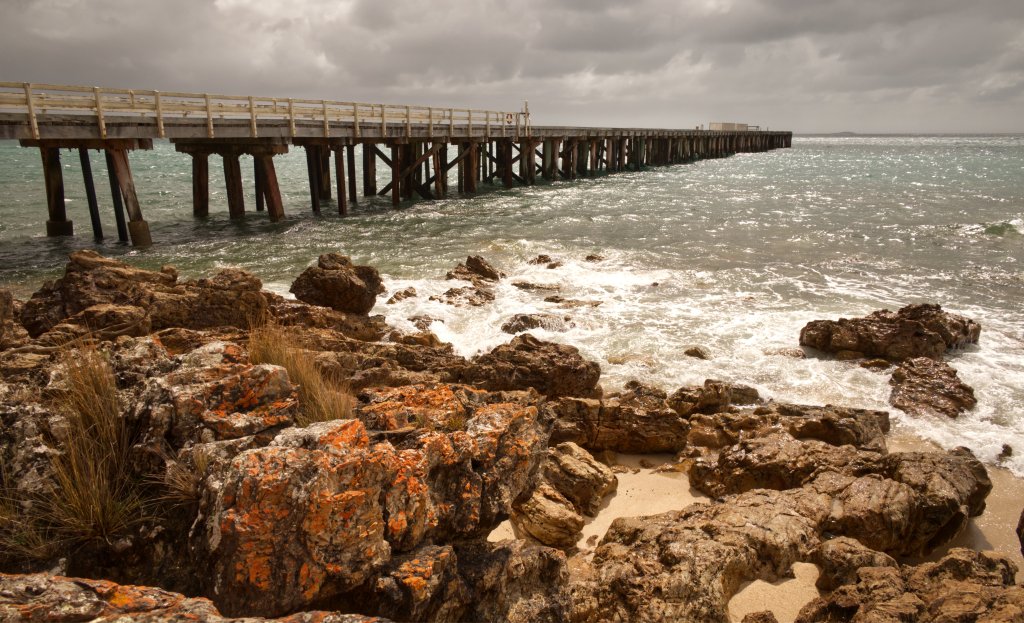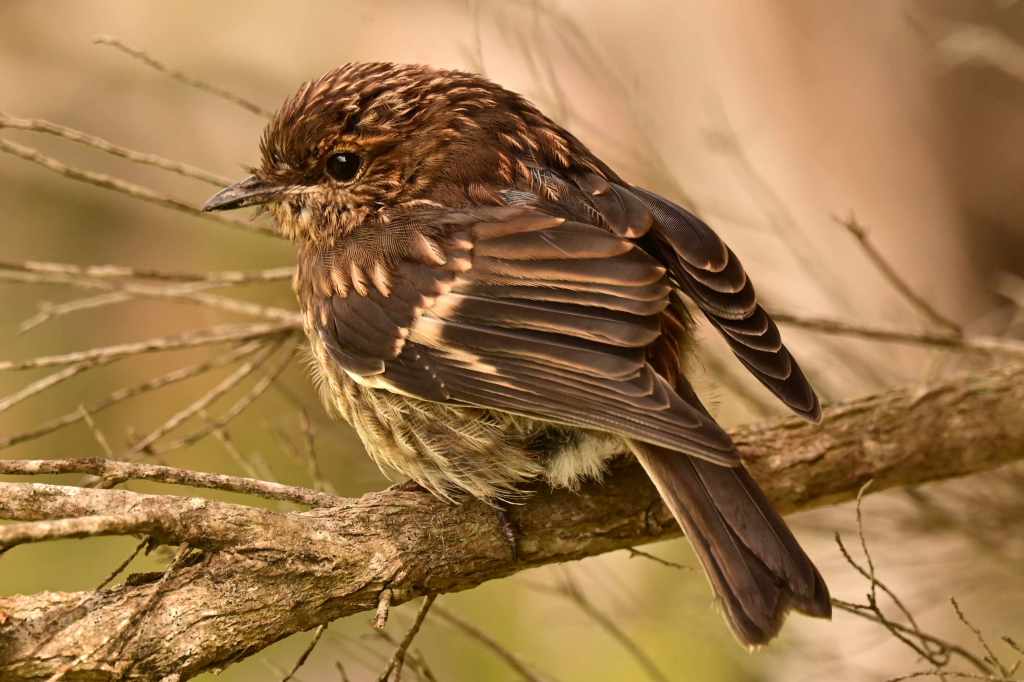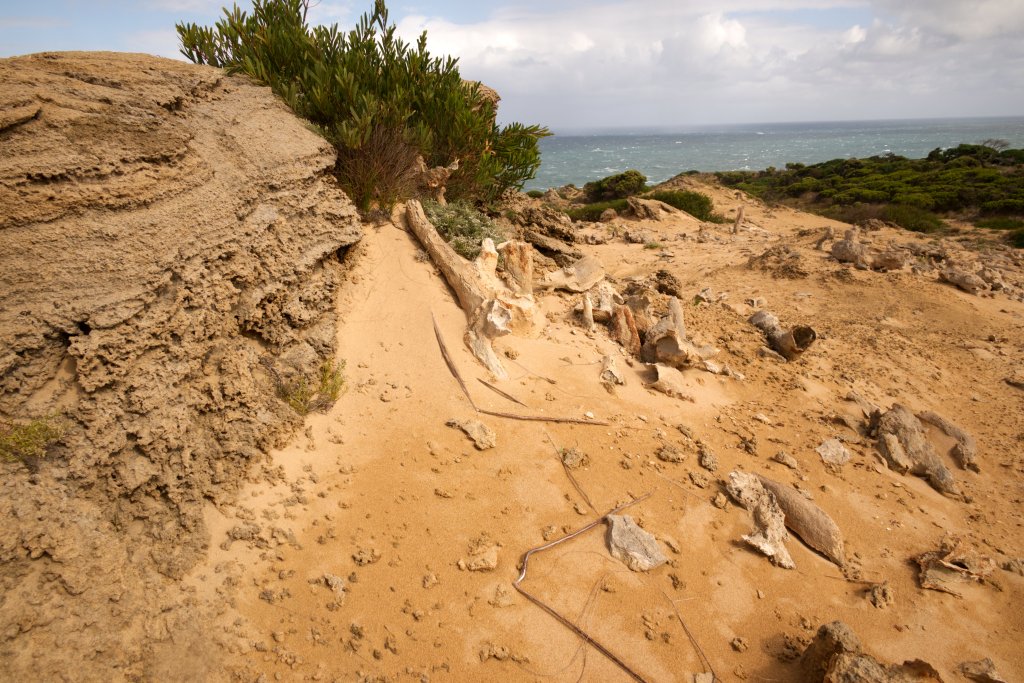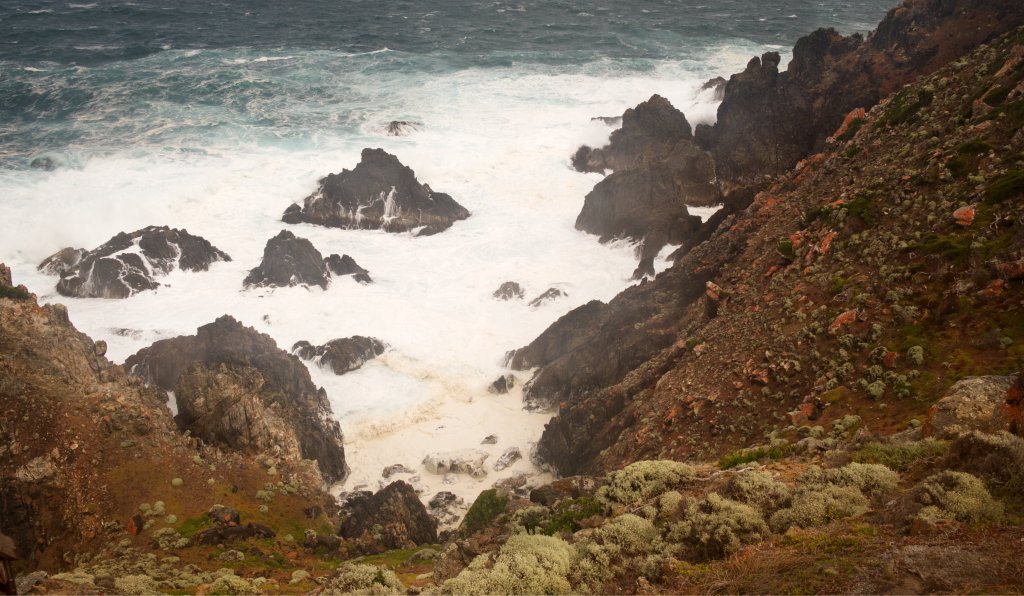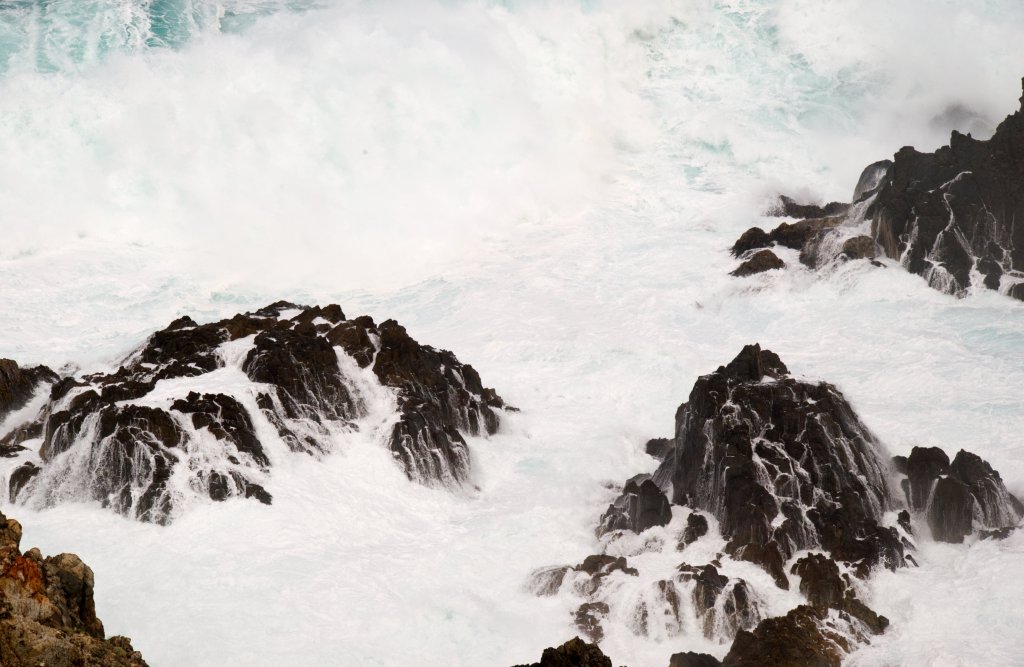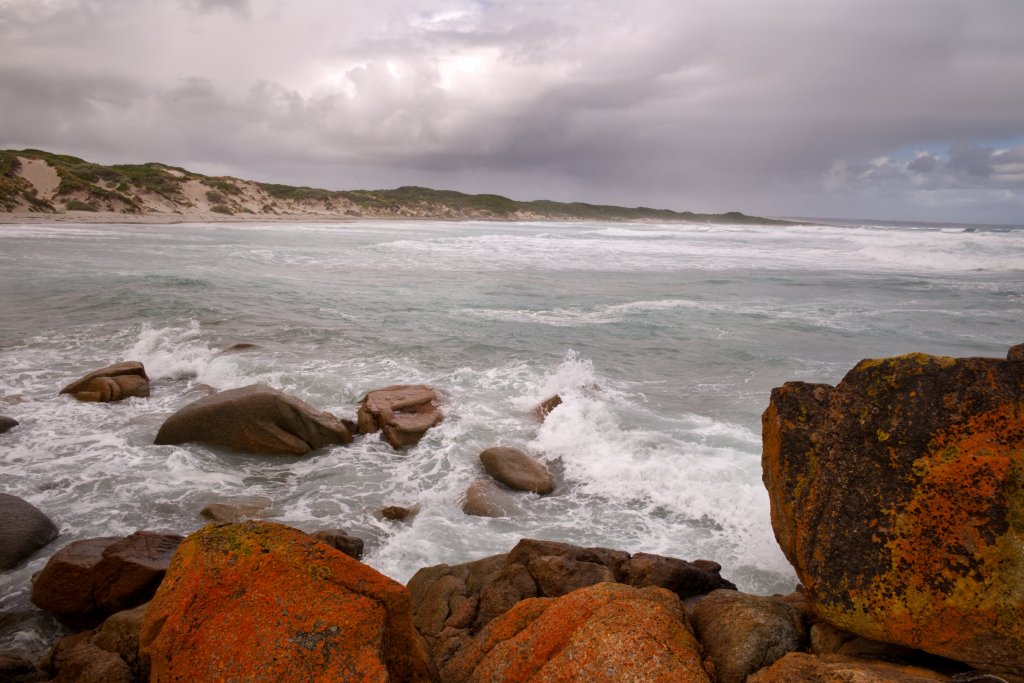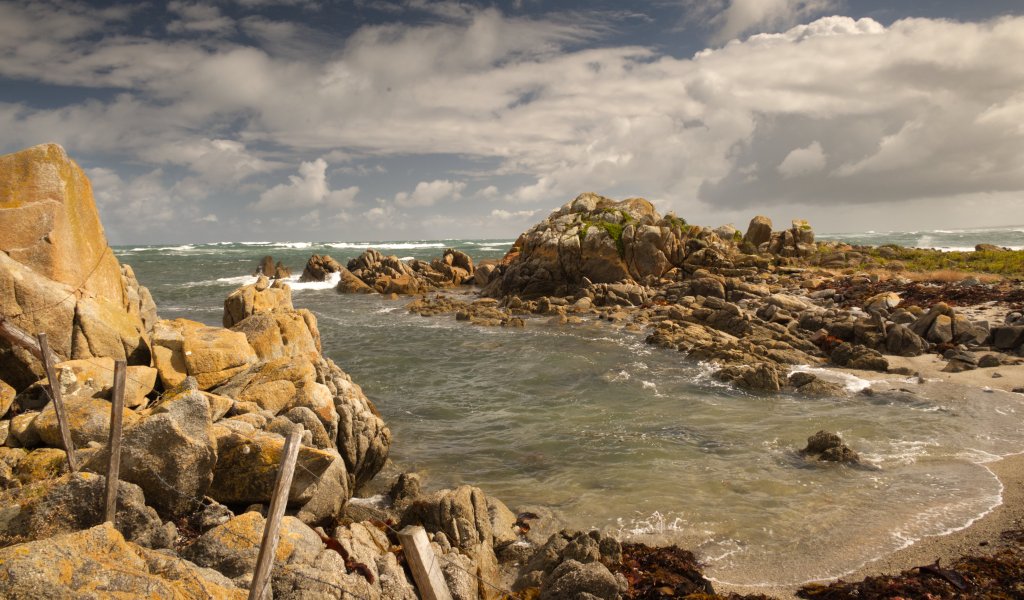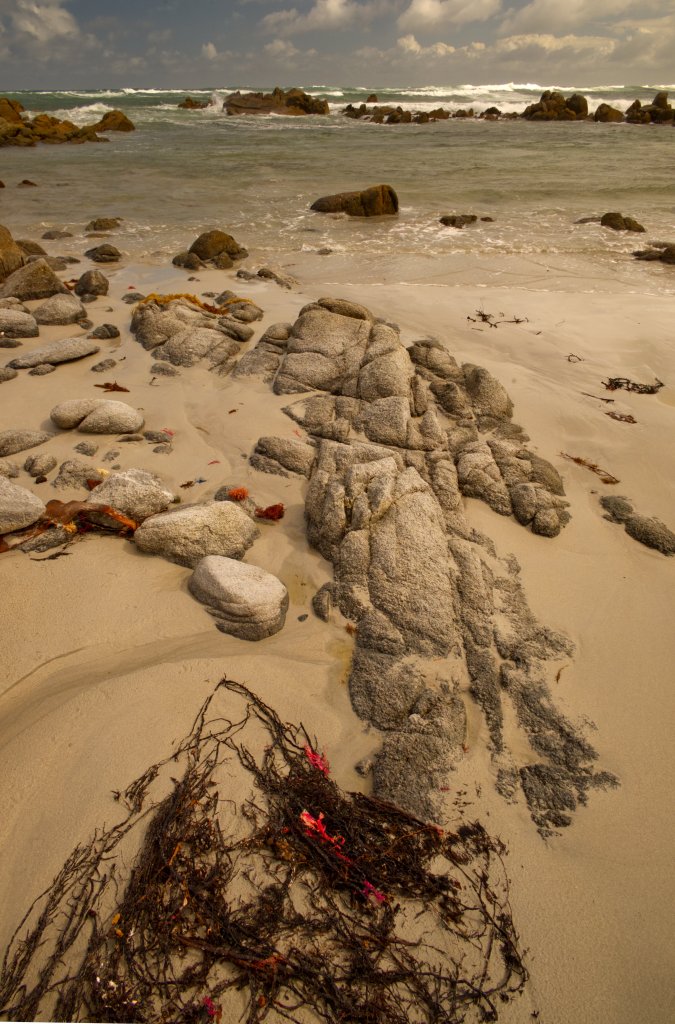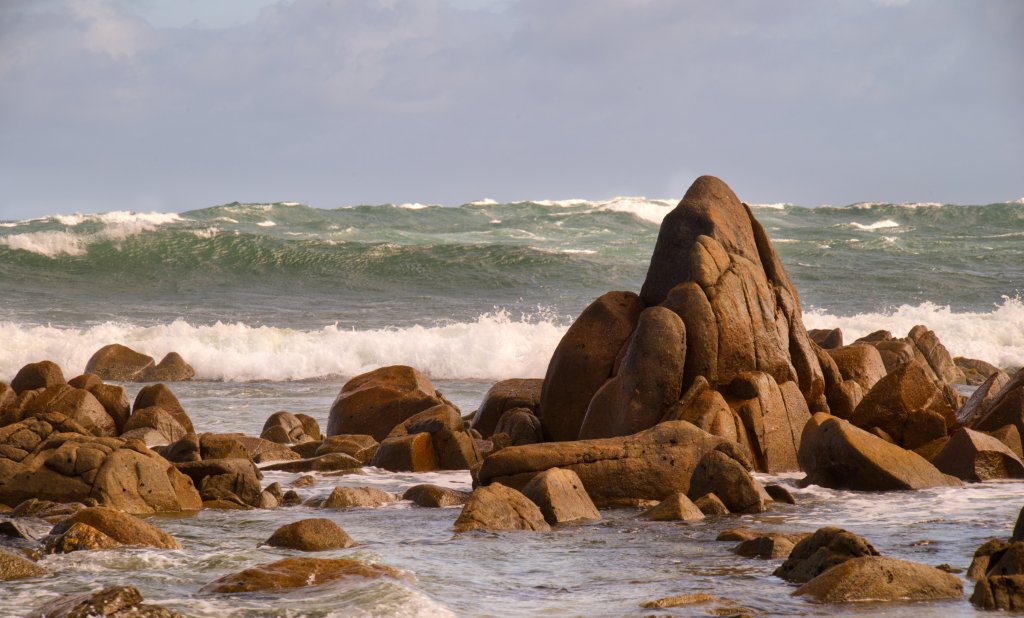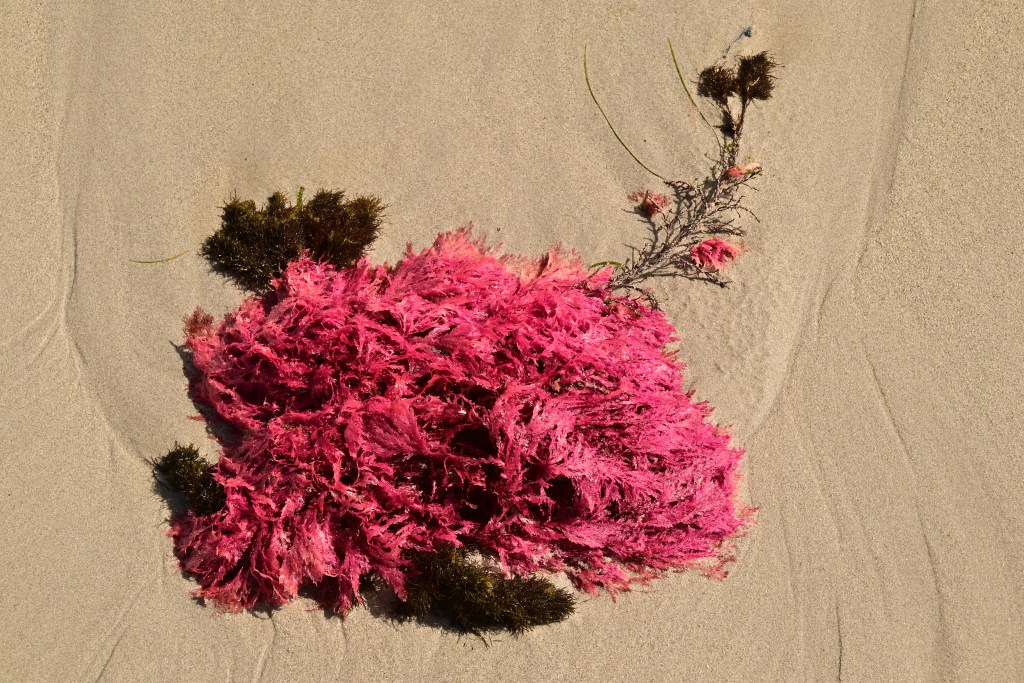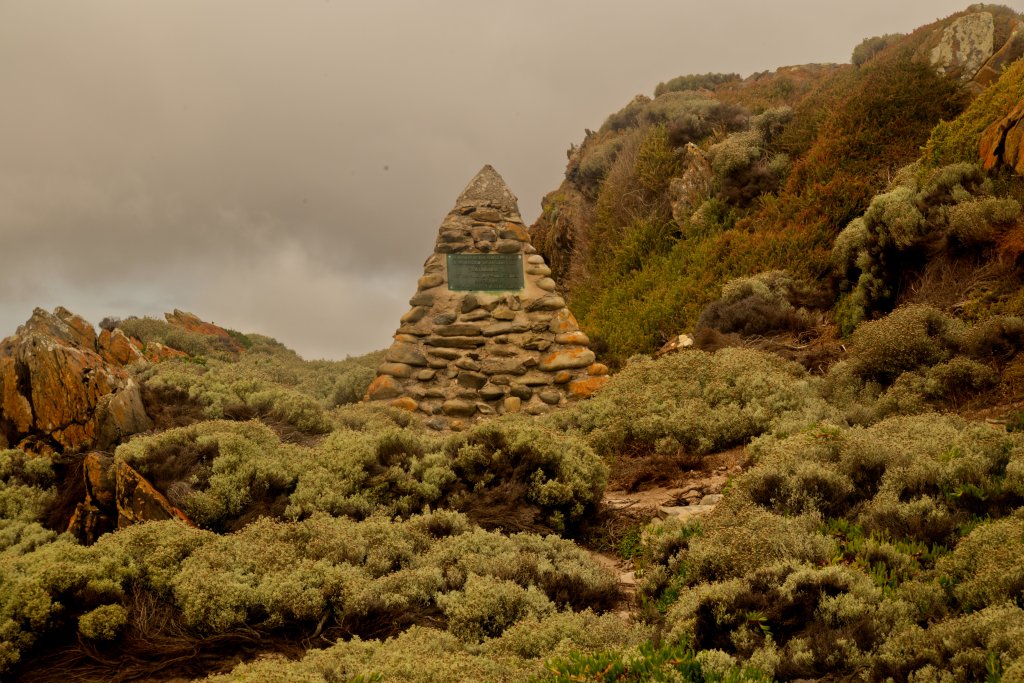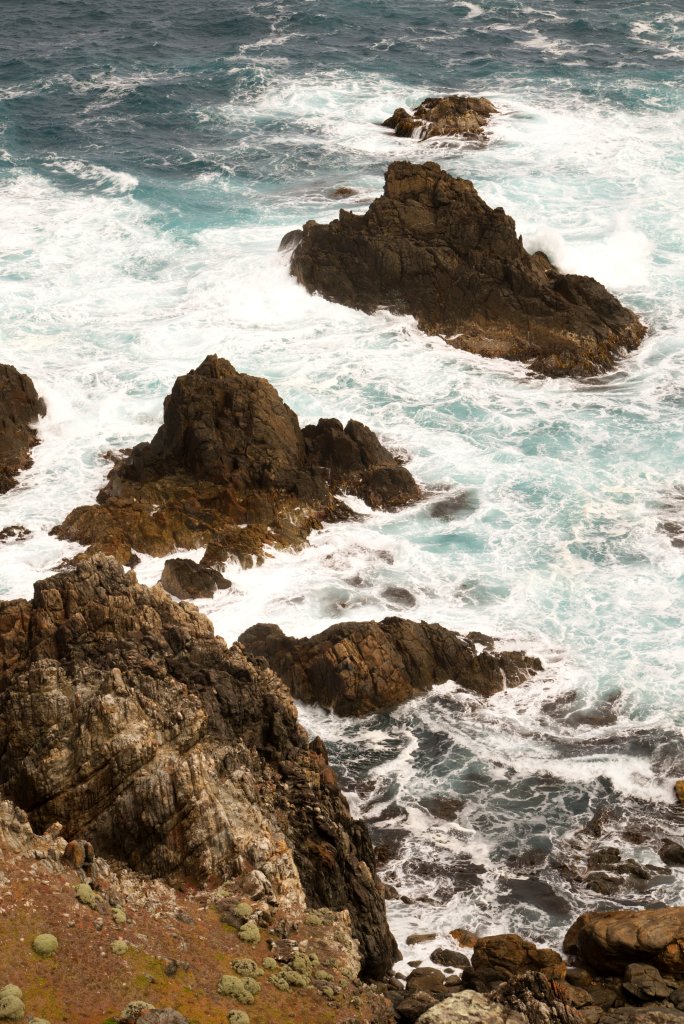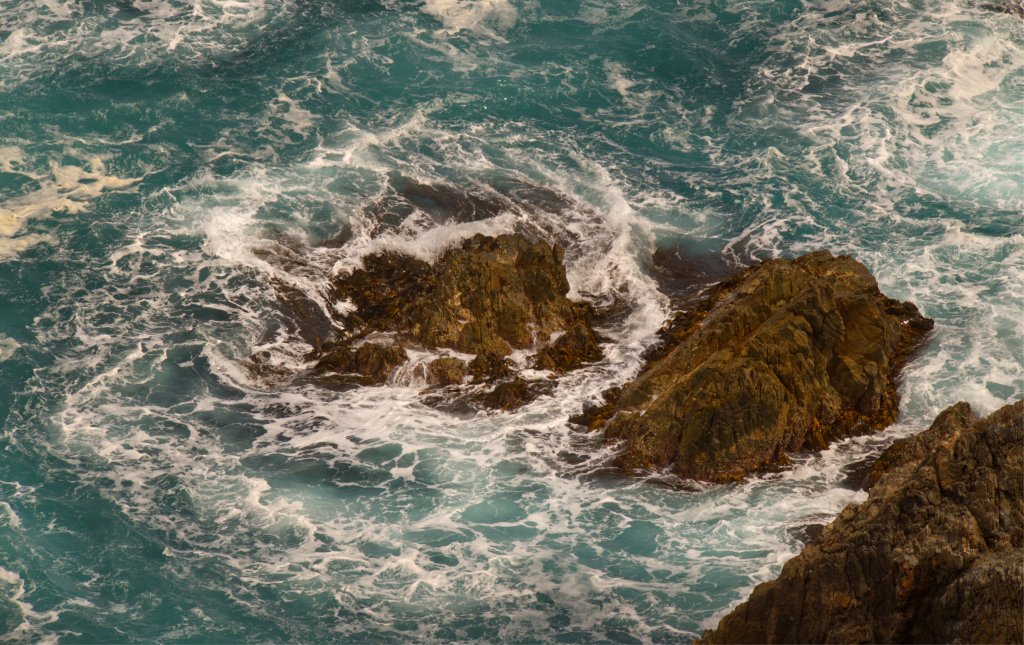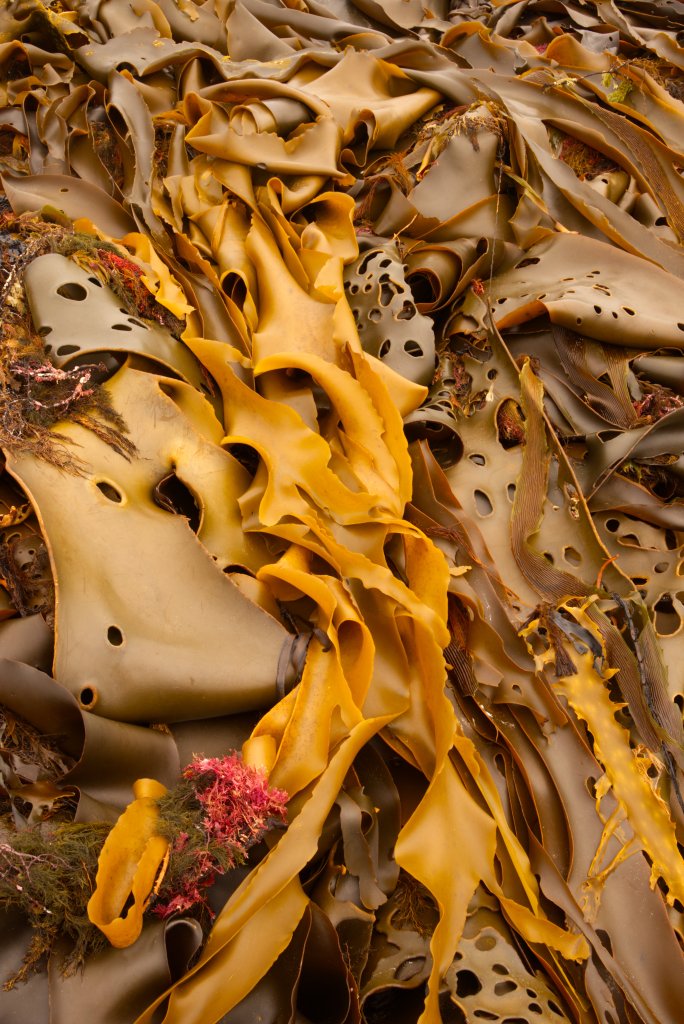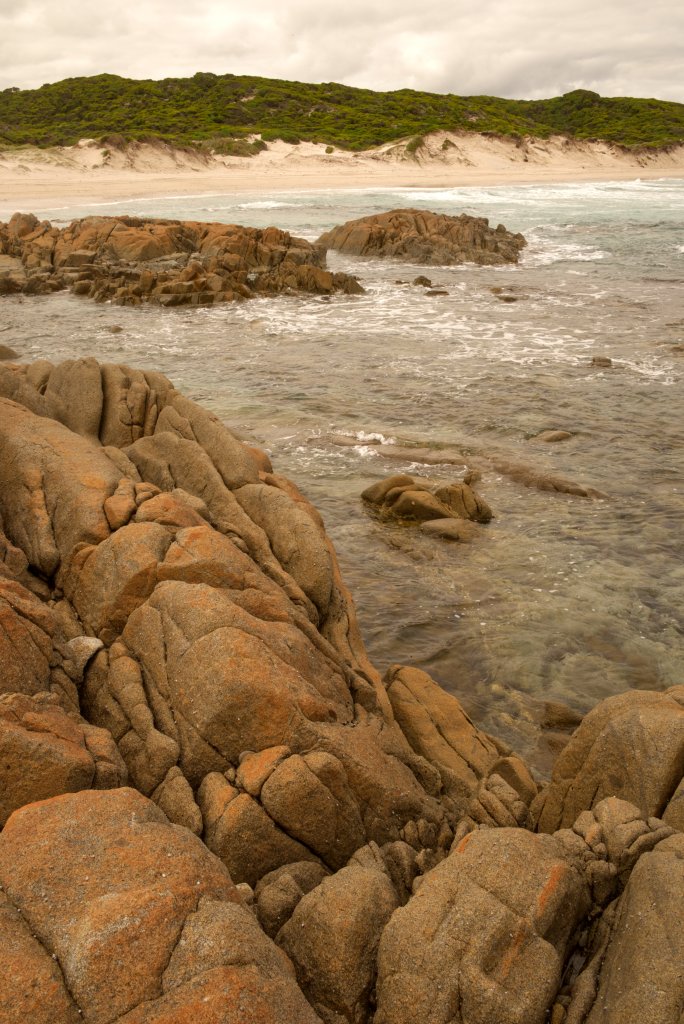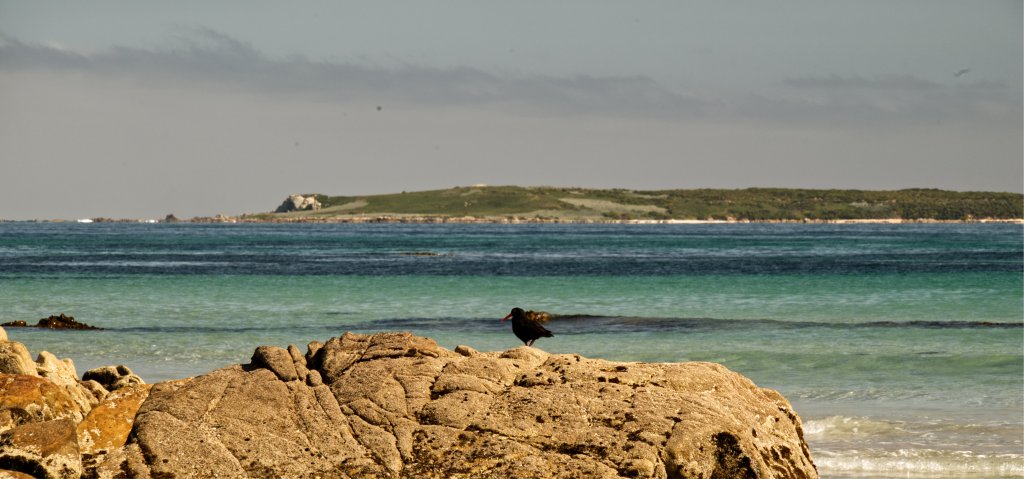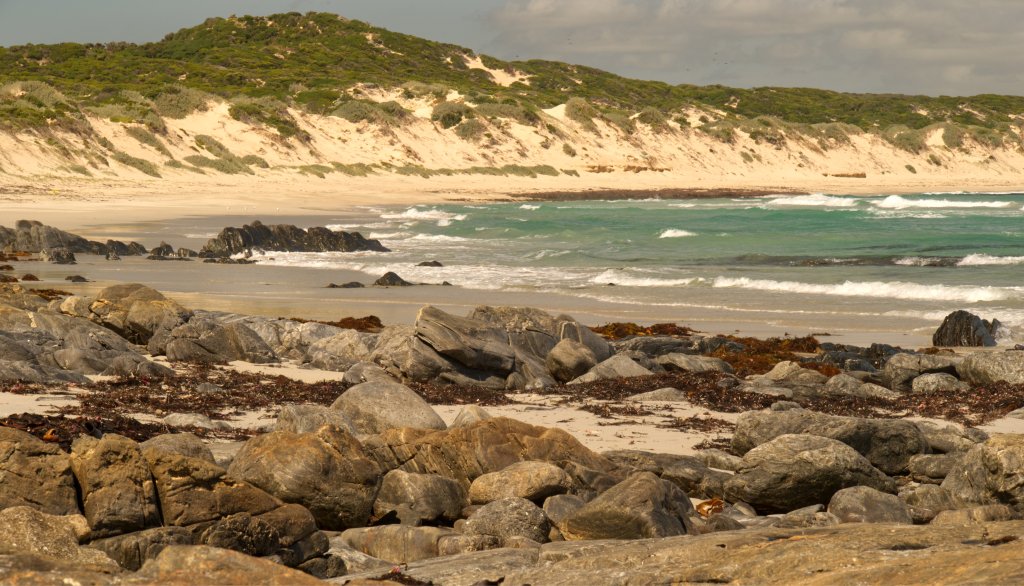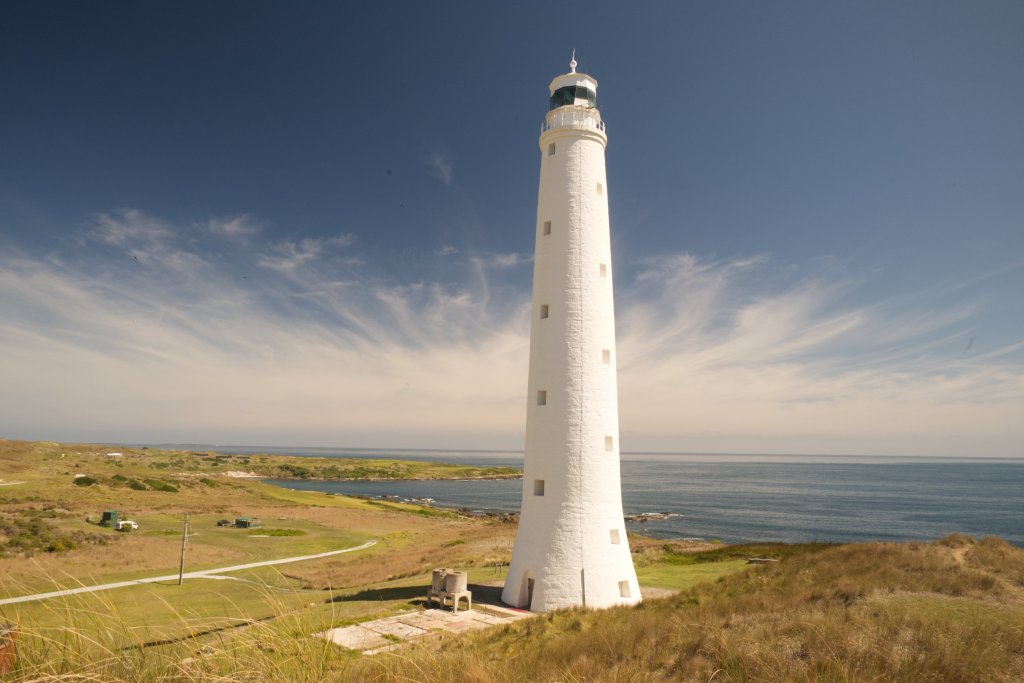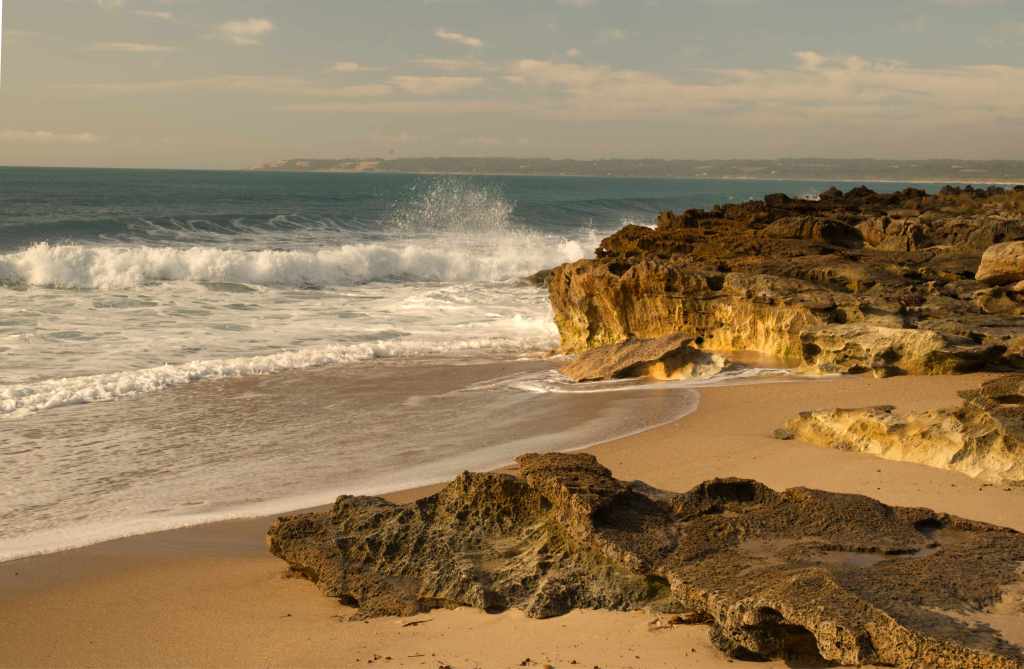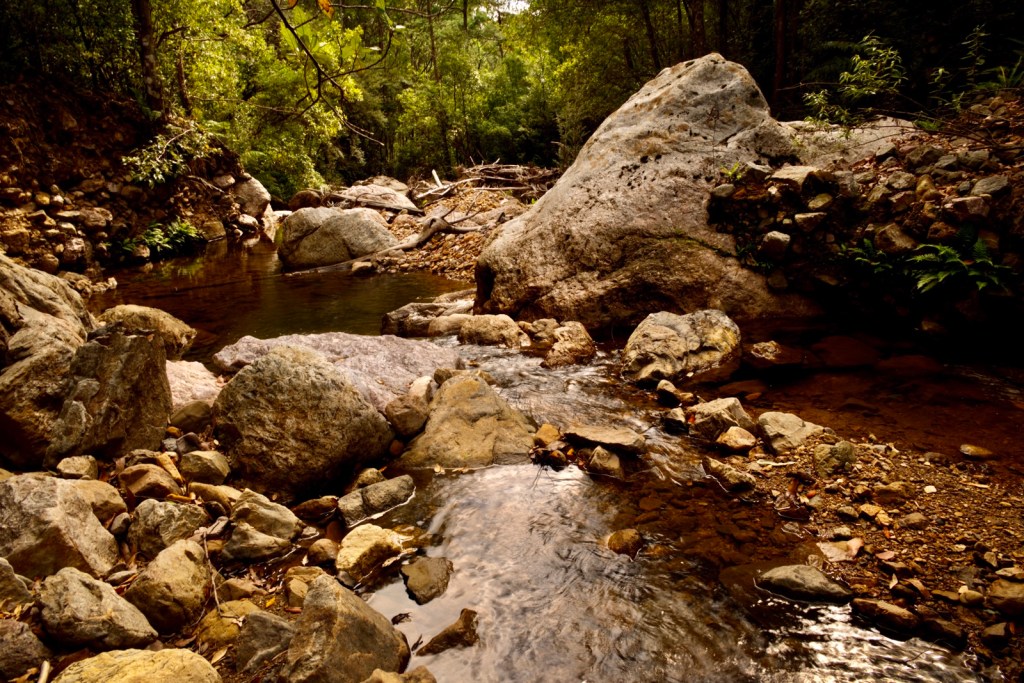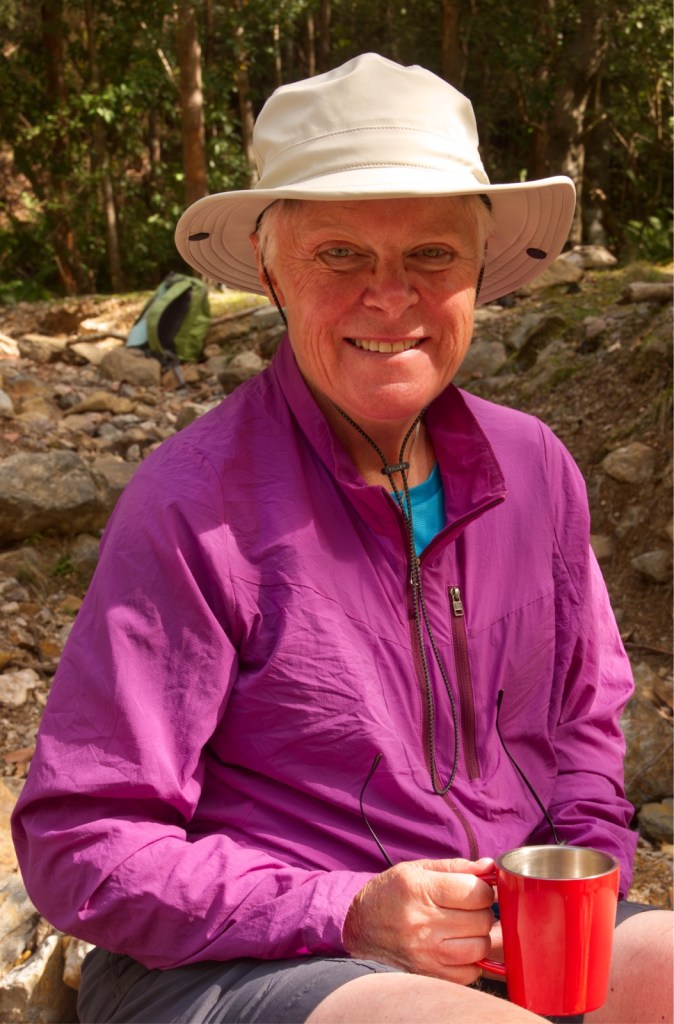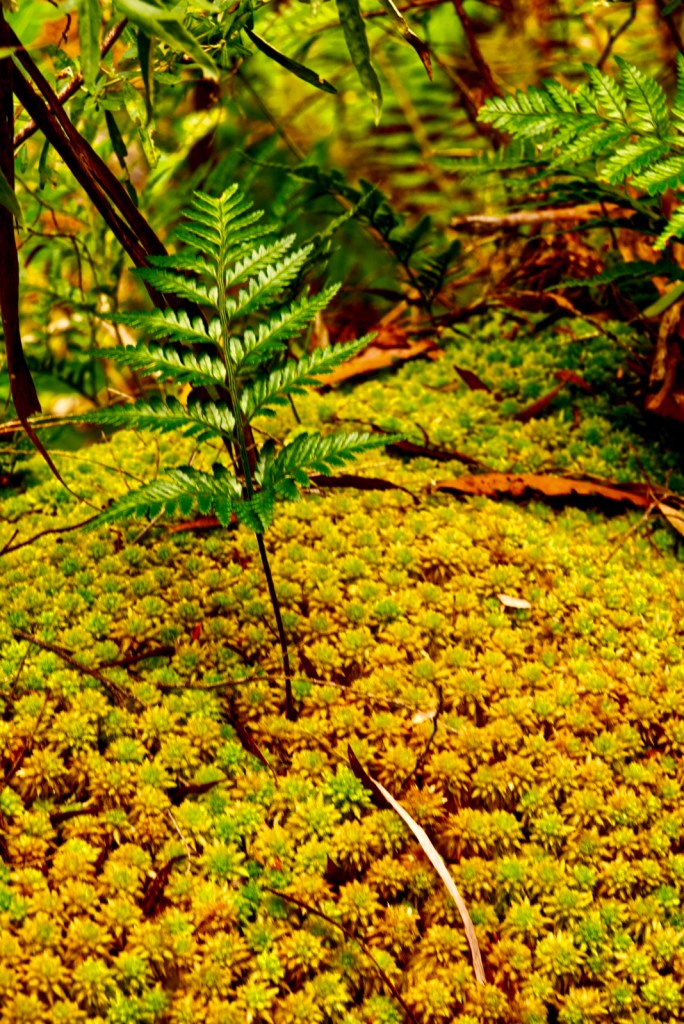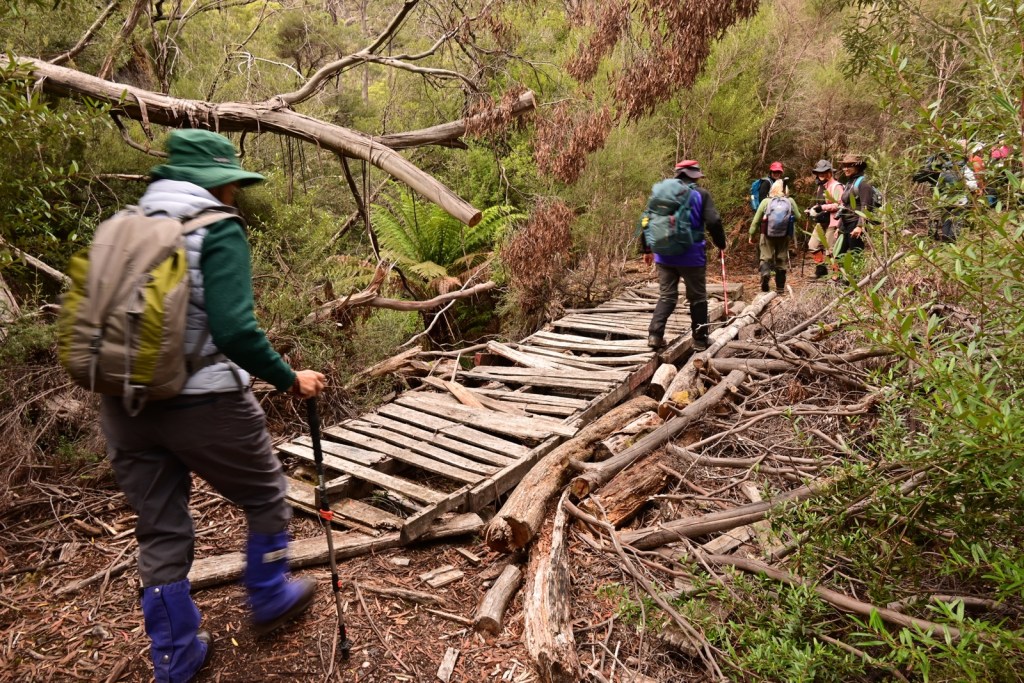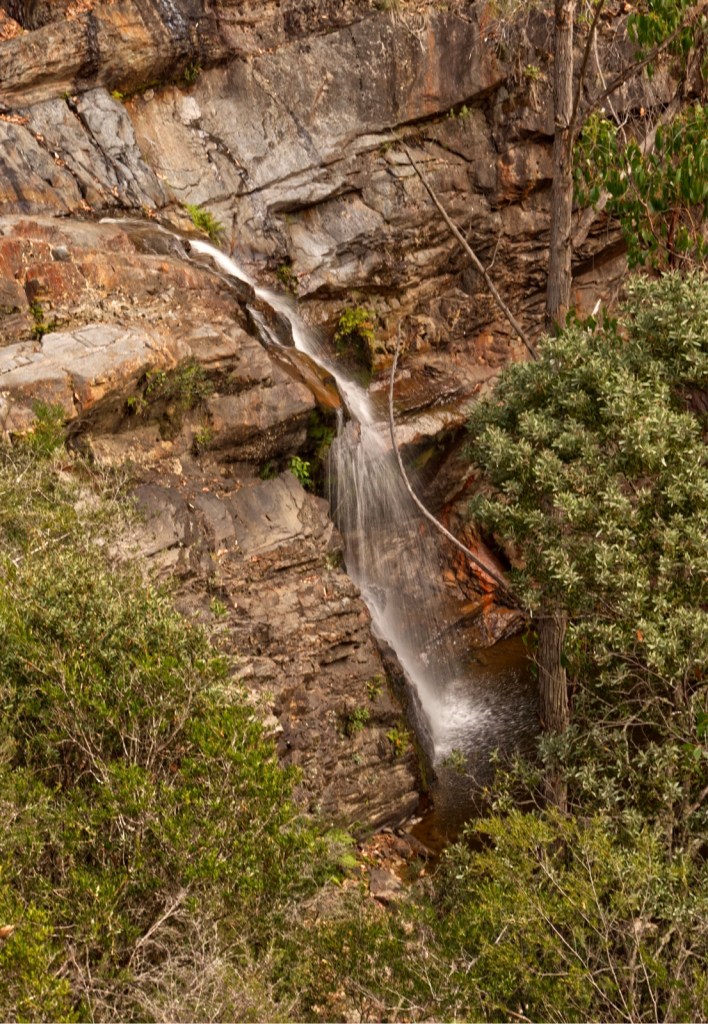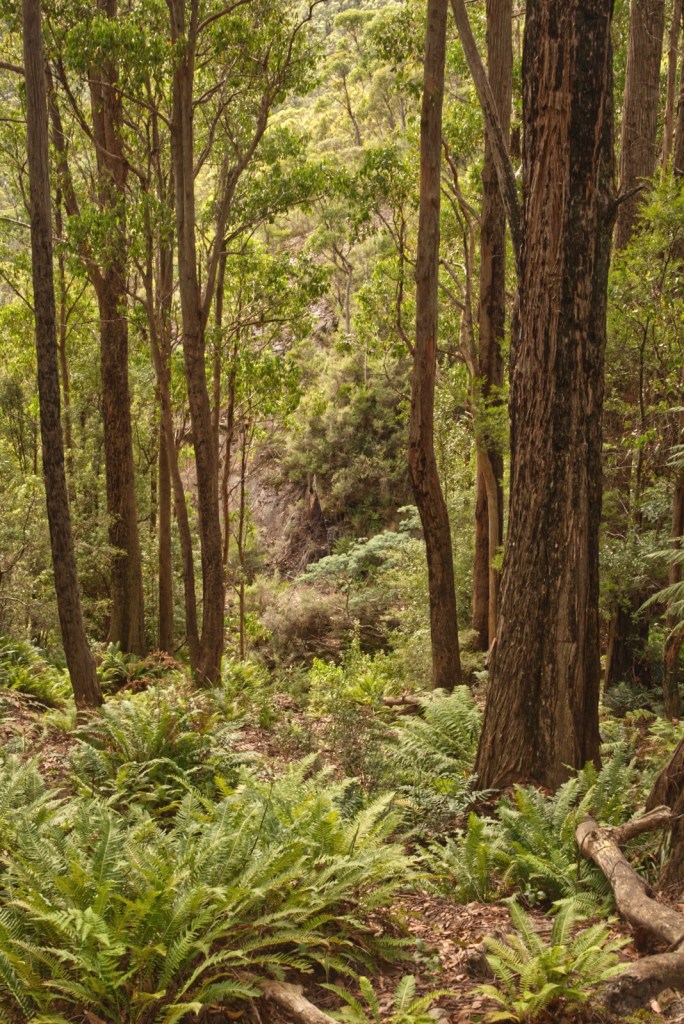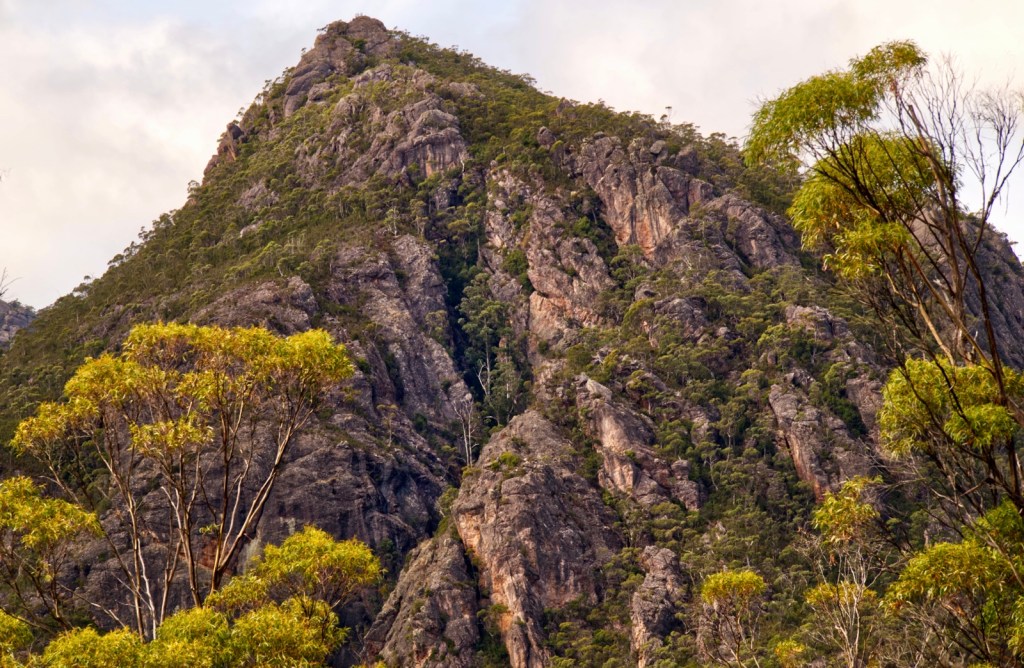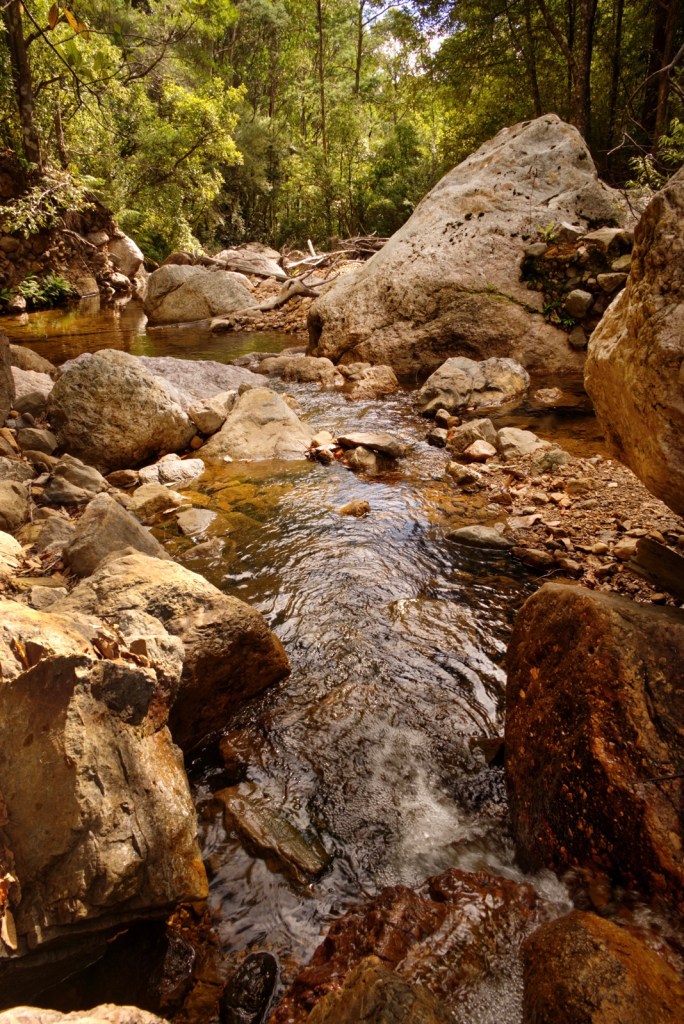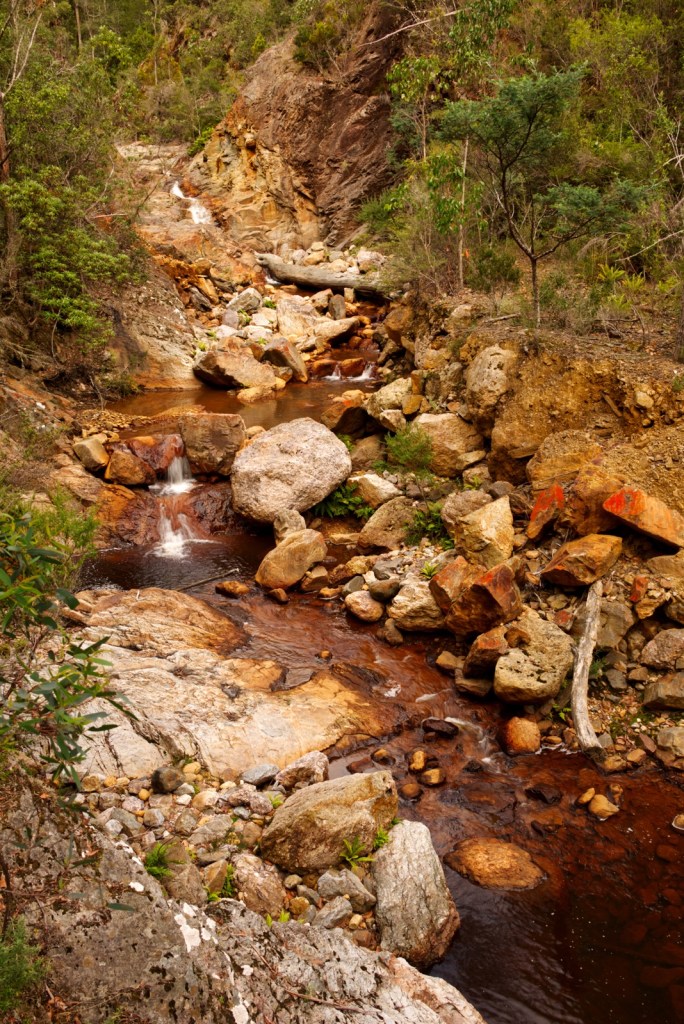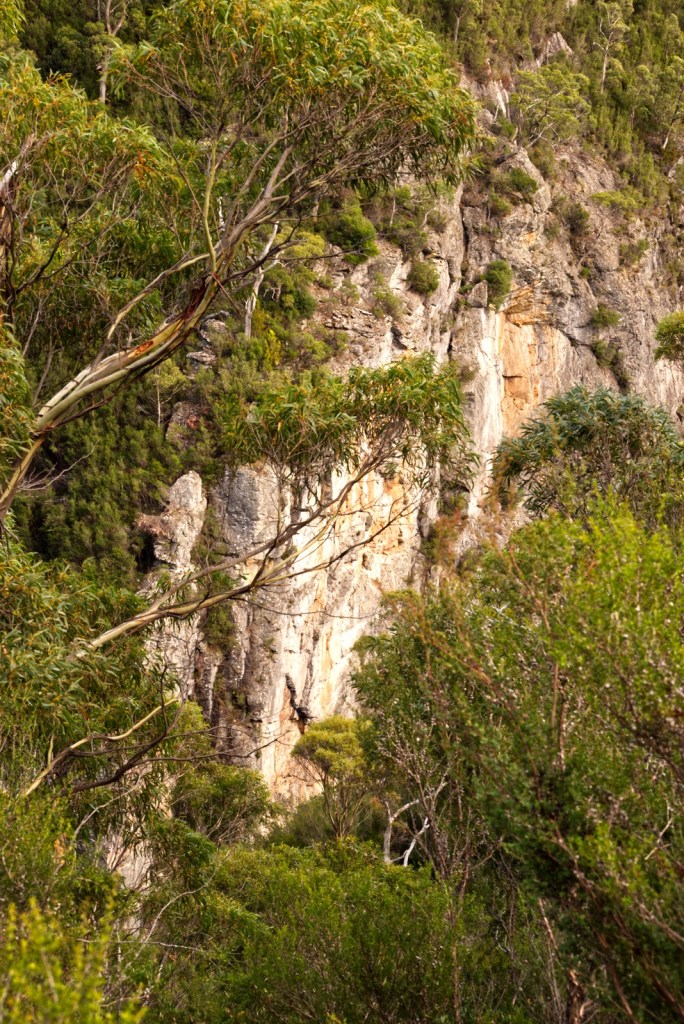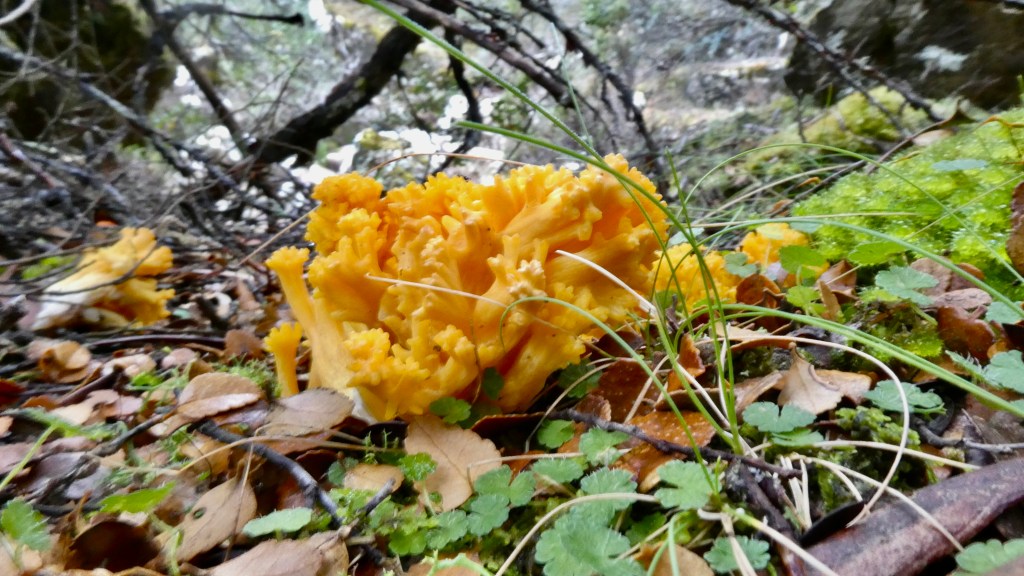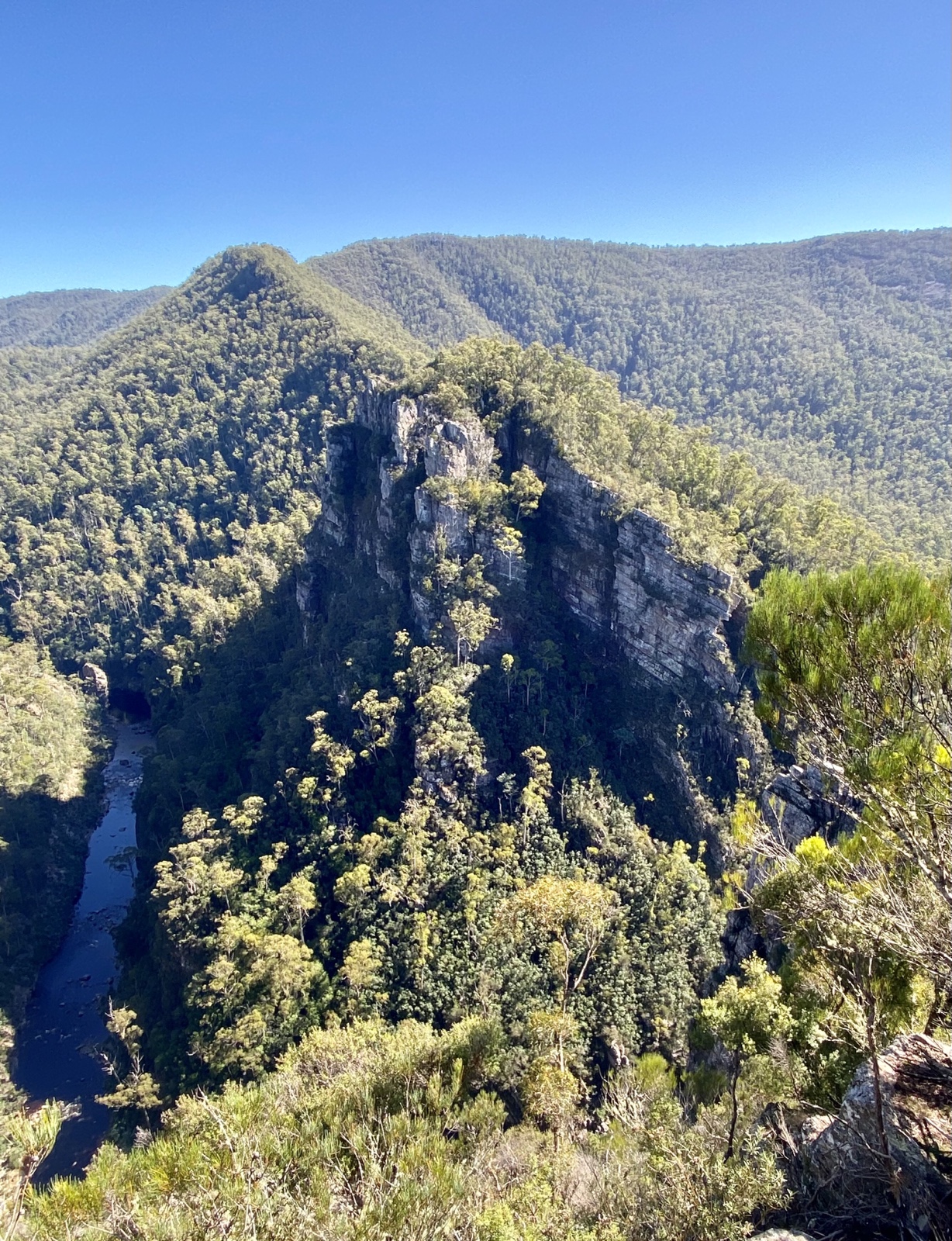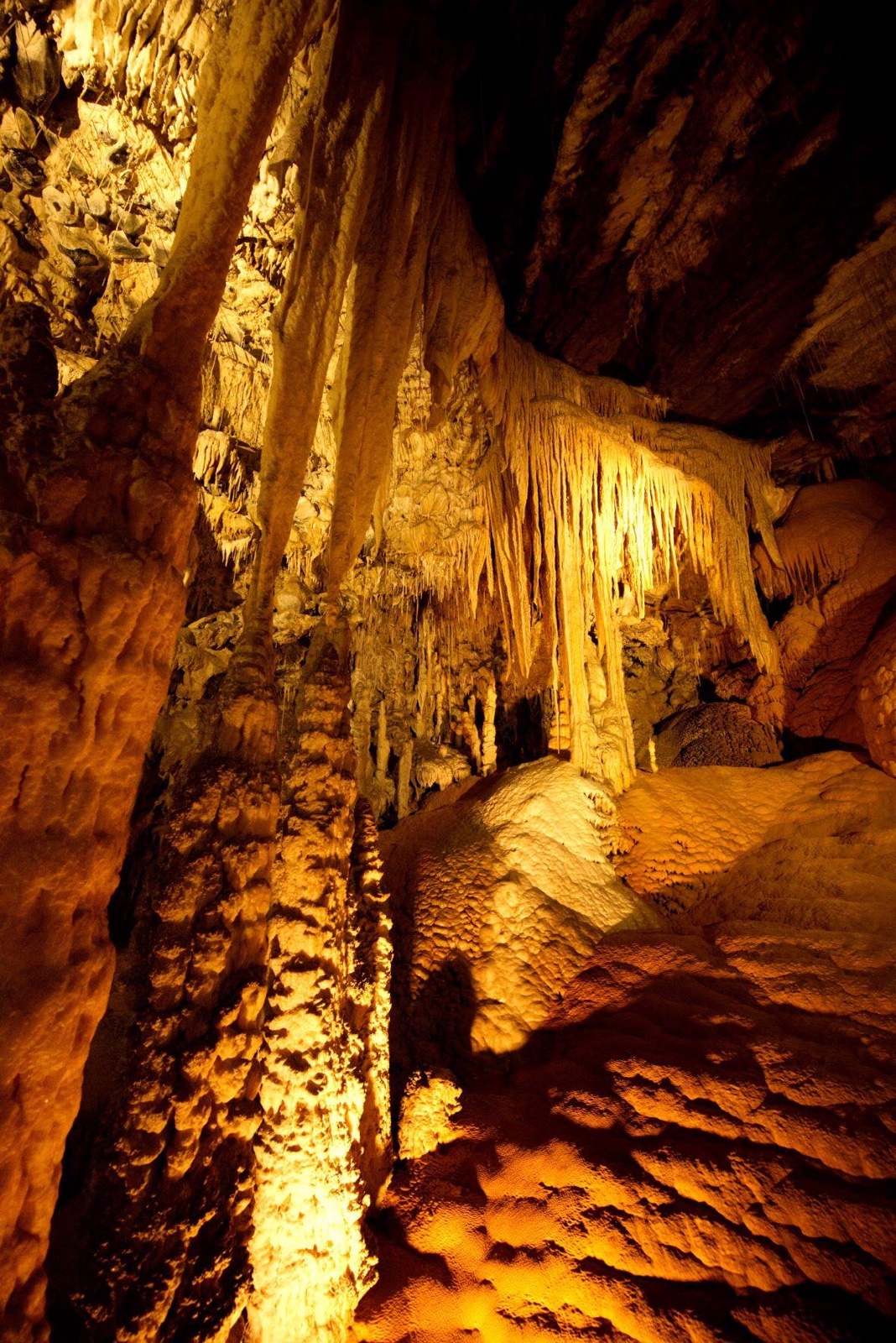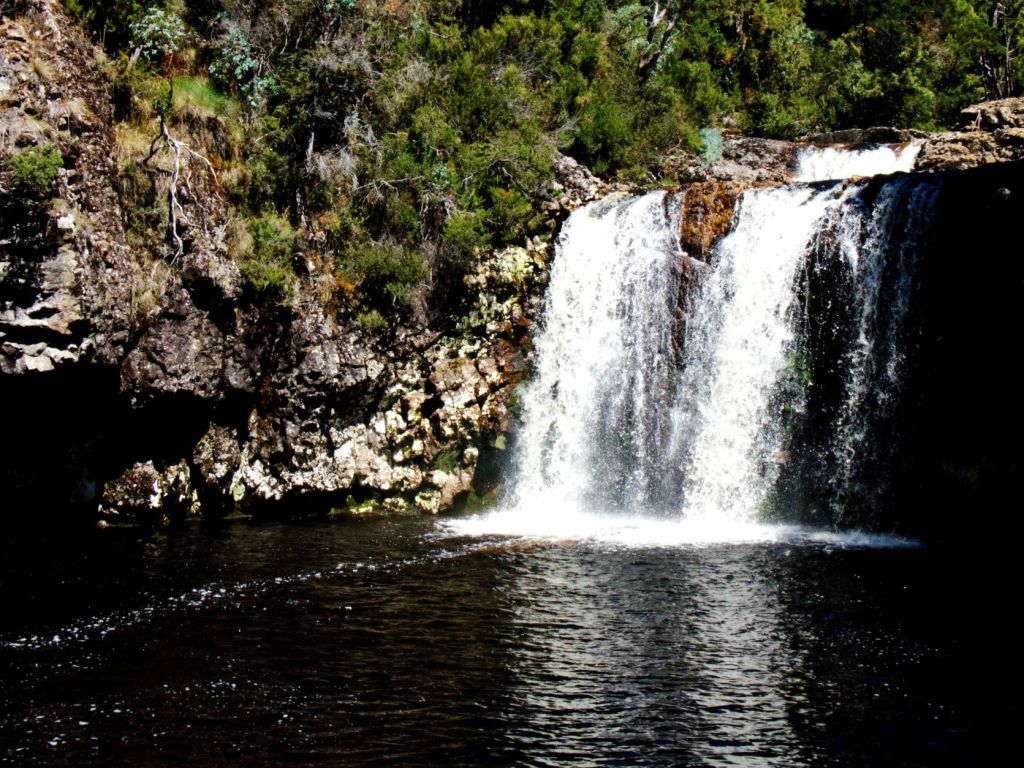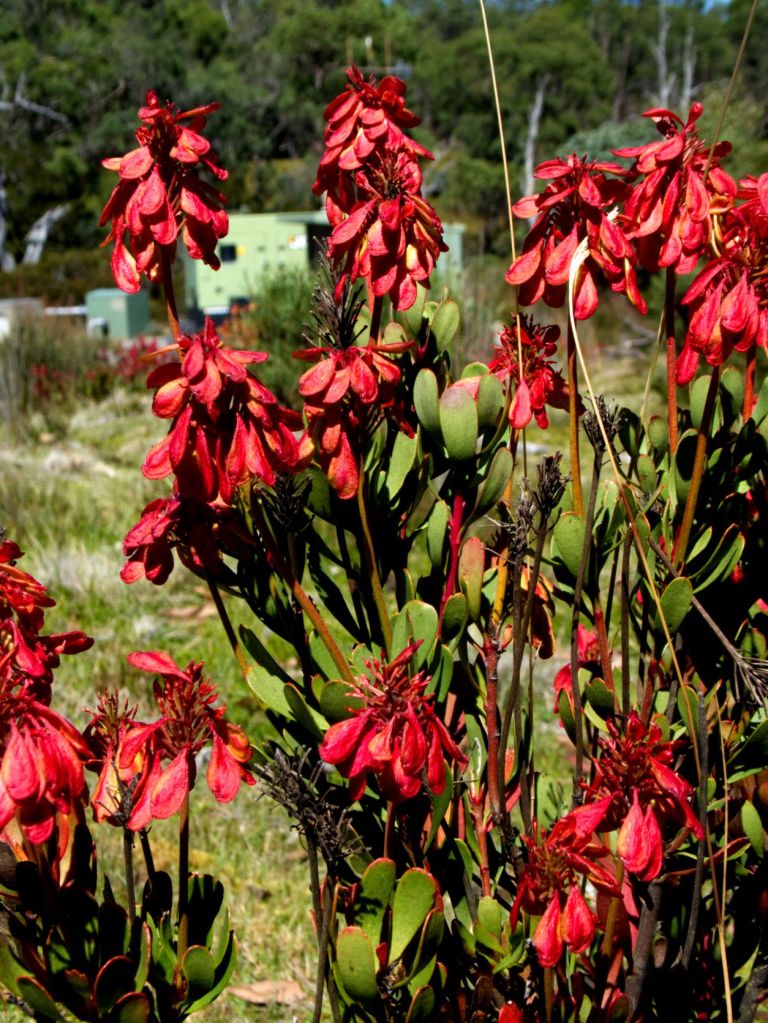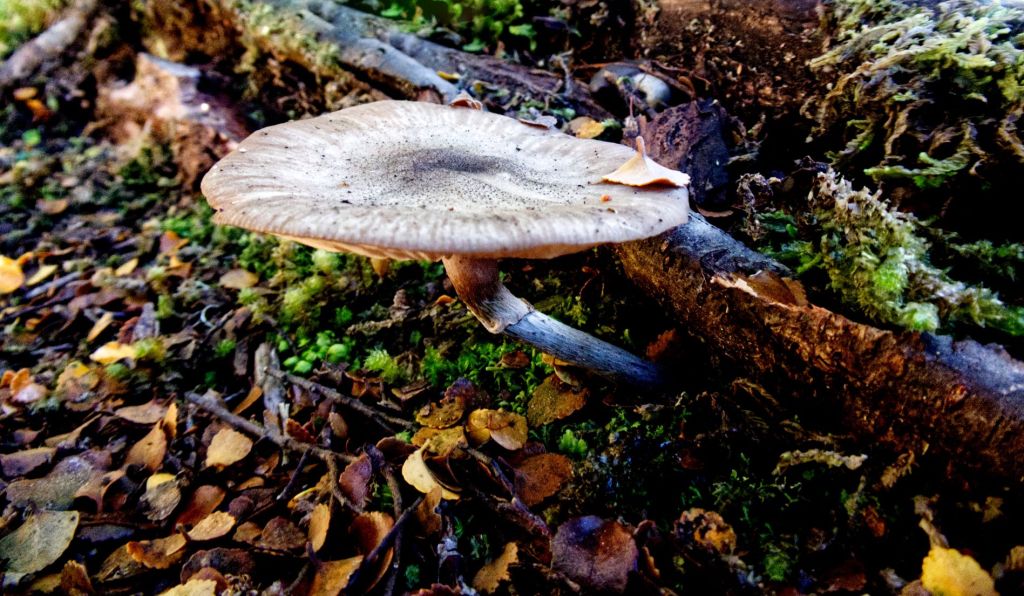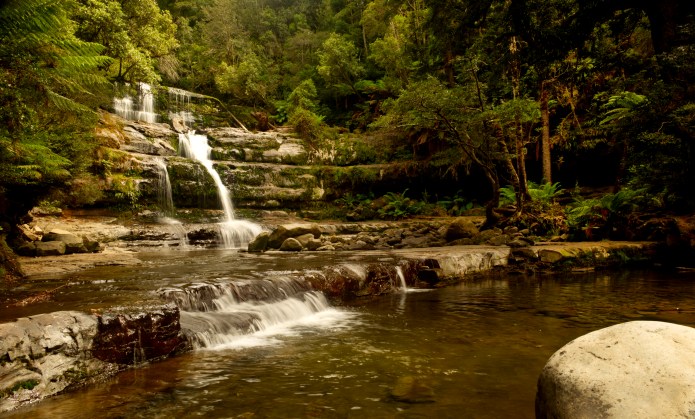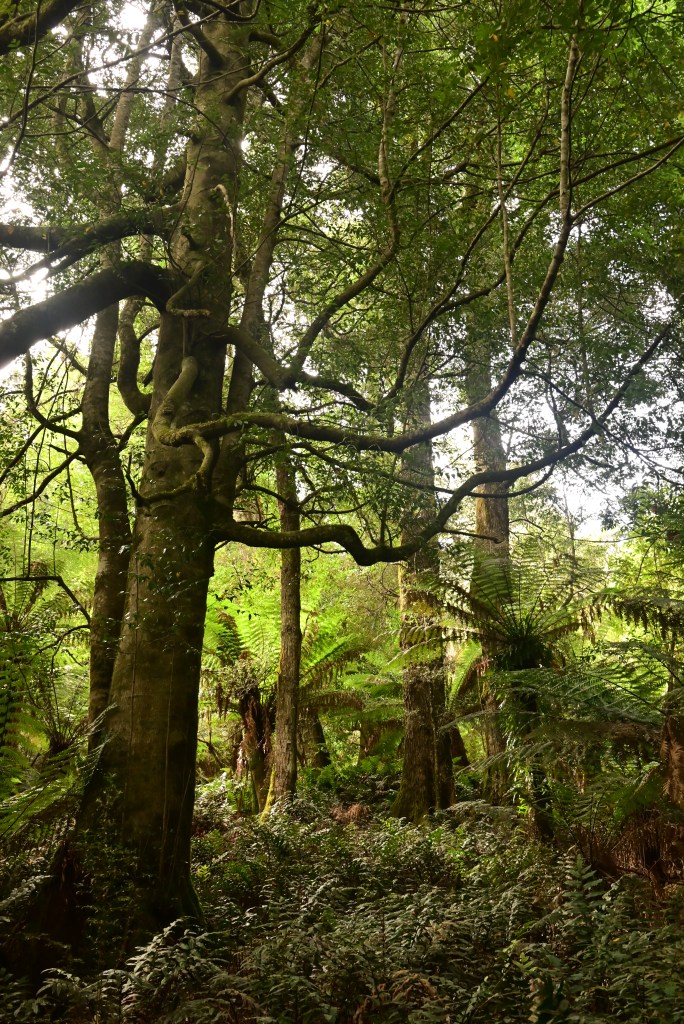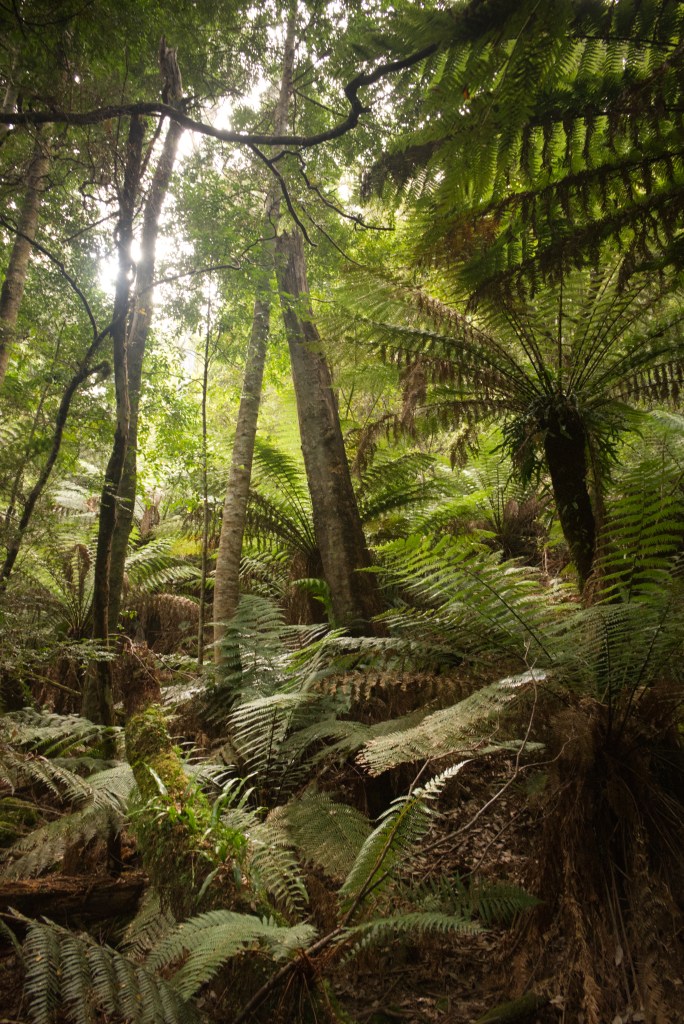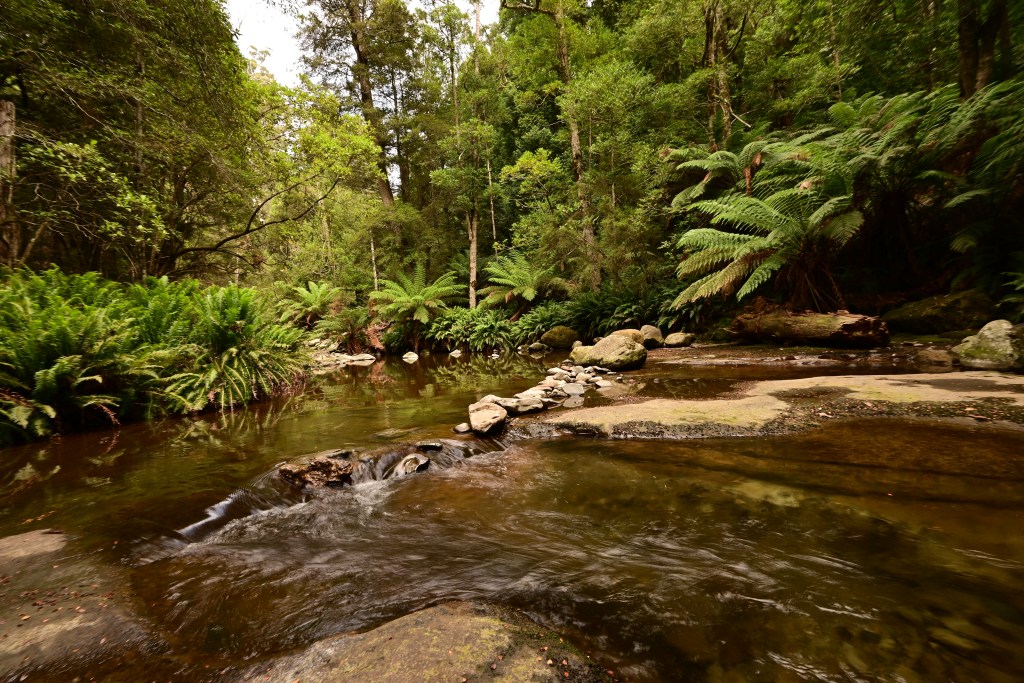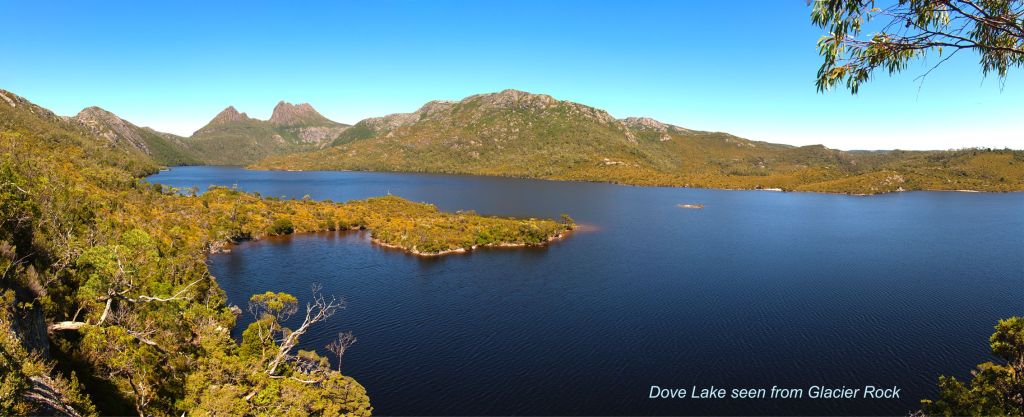Kayaking Flinders Island
Our trip began on the morning of Sunday the 10th of March and concluded with our arrival back in Launceston on Saturday the 16th.
Jennifer and I requested a car through Uber to take us to the Aero Club. It is a short distance from the main Launceston Air Terminal. A grey Amarok dropped us at the car park nestled between the Aero Club and the Launceston Distillery. This beautiful sunny day seemed full of promise for the trip. The temperature and rainfall in north Tasmania had been exceptionally mediterranean in attitude all Summer and the same disinterest in raining, looked like persisting into Autumn. In company with many Tasmanians, the plants in our garden had suffered, and many had died due to these unusual conditions.
Standing by the wire fence, located between us and the tarmac, were our two guides for the coming adventure. Mads, a tall, slim, and very elegant young woman, was the first to welcome the two of us. Alayne, bubbly, warm and friendly, quickly introduced herself as well. Ove the next 20 minutes, the other participants in our kayak trip arrived. Kerri Anne and Michael, a well-travelled couple, then Mary Anne and David who proved to be inspiring story tellers of their trips to Alaska and elsewhere, and then Leigh and Jean, both scientists on their annual holiday from their Professorial research positions in Bacteriology, their scientific department based in Montana, USA. This proved to be an outstandingly friendly group, perhaps the best group we have ever had the pleasure to journey with.
None of us were new to tackling adventurous activities. Kerri Ann has done very difficult and long bush walks all over Australia, Mary Anne and her husband David, have tackled Alaska, including walking in Denali. Leigh and Jean shared stories about travelling all over the world as well as their travels in Montana during Winter; gives cold a whole new meaning.
We flew to Flinders Island in a Cessna Caravan, it’s a ten-seater aeroplane with abundant luggage space under the passenger compartment accessed by doors along the side of the fuselage. Steve, the pilot, placed our bags inside. A few of us had favourite paddles to use during the week. These paddles are assembled from two halves and reasonably compact, much more than the standard full-length paddles.
There had been fires in the forest near Ravenswood, a suburb of Launceston and notorious for conflagrations of various sorts. This bushfire proved to be challenging, classified as out of control for at least two days. As we drove back from Trevallyn the day before our departure, we could see the angry, orange glow in the distance piercing the dark.
Smoke haze hung in the air thwarting any crisp photography. Despite this, even the fuzzy views of the islands below us were still exciting.
We landed at Whitemark Airfield, after a 40-minute flight. At the airfield, the bus was parked, waiting patiently for us to store our gear and then climb in. Mads drove us to Lillies Beach. There was no one else on the beach. A beautiful long beach, garlanded with red, dried out sea grass tumbled onto long swathes to well above the water line. We had our first sight of the granite boulders which are ubiquitous, extending from mountains to beach and to water. Richly coloured by extensive, by touch imperceptible, orange lichens. Now mute, these sand blown and water carved sentinels seem to guard the beaches. The sea water is translucent, its colour is a limpid green in the shallows and a steely blue away from the oceans edge. Wooden pillars of an ancient jetty, stand witness as white and grey ghosts of a time when sealing and whaling demanded easy access to the coast.
The timbers are split vertically, curving the wood upwards and outwards, flowers opening to the sun.
The yellow, sturdy, rotomolded double kayaks were lined up, side by side on the beach well above the water line. These looked and indeed proved to be tough, no-nonsense kayaks capable of comfortable travel in both smooth and rough seas. Mads explained the basics, including, the safe use of the spray skirt. Using the elbows to get the front edge on the lip of the cockpit, and when pulling it off, pushing away using the strap located there. Sand had clogged up the fittings for the footrests in my front cockpit and the steering pedals position inside the stern cockpit were jammed too. A fair bit of pushing and swearing was needed to get them to move. For the record, Alayne and Mads could move them with much more skill than Jen or me; and they did not need to swear???
At last, all of us were set up, looking very elegant in our spray skirts which were clipped up to our life jackets for convenience if not aesthetics. We unfastened them, and pushed out boats in, bow first, to allow the front paddler to get in, get their spray skirt on, and balance the kayak for the rear paddler. Jennifer climbed in, and after some help getting the rudder down, we began our first paddle to Sawyers Beach; this is where the shacks, we were to stay in, are located.
The first three days were sunny and hot, even on the water. I wore a tea shirt under my life jacket with liberal amounts of sun block down my arms. This paddle took two hours, and in generally calm water. We paddled past boulders, sand, and bushland, then around a point to see the length of Sawyers Beach. There were very few buildings to help our bearings. We certainly could not see the cabins, even when we were quite close to them.
To the south, far beyond the bay is a blue silhouette, Mt Strezlecki is a jagged saw tooth of s mountain, it hovers over an ocean, it’s slope’s features made anonymous and indistinguishable by haze and distance. Oceans need the intimacy of proximity to be best appreciated while mountains stand impressive however distant.
The feel and smell of water was wonderful. The feel is that heaving swell which rumbles out of the ocean to spend itself against the coast but on the way cradles every boat, vessel, and ship in its hands. The surging of the ocean was muted and gentle today. I unconsciously used my legs to brace the inside of the kayak and balance all the contrary motions. The sea was once our home and perhaps always will be.
The smell is clean, a tantalizing fresh aroma, an amalgam of ozone, leached salt, ancient water, and all the aromas of the aquatic life around and beneath; from the algae tumbling in nearby kelp forests, the microscopic foraminifera hovering under the waves, and the many fish and molluscs, all of them splendidly alive, and all around me.
As I stroke the curved blade of the paddle, I am looking down. I can see the dark sea grass swaying to and fro in the currents, and then suddenly beneath us is an irregular patch of sand, its startlingly white, uninhabited by plants, rocks, or kelp. The water seems so shallow here, barely a hand span in depth, but it is not, it is more than two meters deep. Now there is a boulder submerged beneath us; its true to say that many more of them lie below than above the waves.
We brought the kayaks near the shore, finding a path for them between the boulders.
Each of us, sitting in our sleek boats, are dwarfed in an avenue of stone, aeons of weird carving has formed them into platforms, rings, or pillars. Here, gentle waves break or if they can, wash over them, dissolving into splashing, hissing crests.
We beach the boats and draw them up and away from the water. The tide is well out, and the sand is wet, glutinous like mud, and the deep piles of storm shredded sea grass; all make footing treacherous as we carry the boats away from the shore, and onto the trailer parked behind the shacks.
The accommodation for the group are two small houses. Jennifer and I stayed at the main building with another of the couples, Mary Anne and David. We had the bedroom on the west, so it was quite warm from the afternoon sun. There are no fans, but the windows can be opened to catch any evening breeze off the water. One of the two long, grey lounges faces the ocean. I could look over the grounds. There is extensive grass, parched brown from this unseasonal Summer dry. There are bare patches of sand and earth, grass scoured by the many grazing wallabies. They travel singly or in twos. They rest in mottled shade in the heat of the day, then become active at dusk and in the evening and early morning. Two frequent visitors are Mum travelling ahead of a smaller junior who is jumping with more enthusiasm than skill. Together, they pause then stop, bending down to the grass, nibble at shrubs or to stand up and grasp low hanging bundles of the casuarina branchlets. They tear off the foliage with its teeth. These trees fringe the property and follow the slope down to a small beach. Most evenings, Jennifer and I would walk down one of the paths to the beaches, high and close up views of a coast, richly strewn with rocky hills and boulders. To the north is a headland covered in featureless dark bush and scrub before it tapers into the bay. Turning to the south, we could see Mt Strezlecki, its walled cliffs were no longer hidden in daytime, blue haze but were distinct and fiercely aglow. The mountain peaks were framed with interweaving and scattered cloud. A scene lavishly brushed in orange light.
With a glass of wine provided by our hosts, we can relax and take in the views. There are folding chairs, we can draw out onto the veranda. This area is separated from the main lounge and dining table by a full-length window. A group of Superb Blue Wrens flit over the grass and then land atop a nearby table. The bright blue male is with his many females and youngsters. They clockwork peek from side to side, then fly off and quickly vanish into nearby shrubs.
Day 2
Today we went to Wybalenna Island.
Another warm and sunny day, a few clouds blown listlessly over the horizon. We went in the bus to Allport’s Beach. A typical Flinders Island beach with sand curving across the bay, and boulders resting together at one end, adjacent to where we launched the kayaks. The water was calm, almost still, until broken by the rhythmic attack and draw back of each blade. As the blade propels, passing beside the hull, it creates a whoosh and thrum in the water. With each stroke, I can both hear, and feel this resonance in the kayaks shell.
As I paddle, I imagine a fulcrum in front of me and its tip is some 25 cm above the deck. This point is the spot where the centre of the paddles shaft stays. Perhaps consider it as a point of purchase about which I simultaneously aim to push the airward blade forward and the seaward blade back. I can keep this going for hours as it diffuses the load of paddling between as many muscles as possible. Add this to the sideward twisting of the torso to increase excursion and power of the stroke, and you have a very efficient way to move across water.
The paddling itself is a universe unto itself, but the scenery. Oh Wow!
Boulders, smoothed by the sea, quixotic shapes; broad pillars carved narrow at their base to stand as inverted roughhewn pyramids. I see caves deep enough for permanent darkness despite a sunlight sky. The most vivid orange stains on the boulders are from lichen. The lichen is most abundant on any sunlit side, and any surface sheltered from the tides. To wind, sand, spray and storms, these tiny living things, give no heed at all. Lower down on each boulder, where water covers the stone much longer each day, the lichen is absent. It is replaced by slimy, translucent moss. Small black seashells (? nerites) and Pipis crowding the surface, waiting for the incoming tide.
Looking closely at the boulders, there is the frequent glint of mica. These silvery fragments are crystals and sit accompanied by other minerals such as feldspar. The slow cooling of granite deep inside the earth, beneath insulating layers and layers of sedimentary rock not only allows crystals to from, but as the cooling continues, great vertical lines of fragility form in the monolith; tiny, long splits run up and down creating potential columns. This occurs due to the contraction of any hot, expanded material that occurs with cooling, except for water. And it is water, wedging itself in these cracks, that freezes and expands splitting these rocks into vertical columns.
It is the nature of stone to be extremely strong when vertically loaded. You cannot squeeze a rock and break it, as a column it can support many times its weight, but when falling, the side of the pillar strikes the ground, and as lateral loads or impacts are not borne well by natural stone, they shatter into boulders. At first these huge fragments have sharp edges and distinct corners, but with time, the processes of erosion ceaselessly smooth and fashion. It is the physics of materials, that erosion proceeds faster on edges and corners rather than the flanks of a boulder hence the curved, smooth stones we see today. They preserve their mass and size but have discarded the violence of their formation.
It did not take long to get to Wybalenna Island. This is a small yet quite magnificent island. There is a small sandy beach with excellent swimming, nestled between complex rock formations. Climbing from the beach there is tussock grass and numerous small tunnels dug into the ground. We saw a penguin chick in one. I think mutton birds or shearwaters roost here. There are none about now.
The bay we have beached the kayaks in, is small but very sheltered, and the rocky platforms around us make excellent vantage points to look out across the water. Kerri Ann went for a swim and found many fish and sea animals. She would swim out, then bob down, her snorkel just above the water. The water here is shallow and warm. She saw fish swimming along amongst the patchy sea grass. Anemones, molluscs, and corals, attach between nests of small rocks, evidence of a rich marine habitat.
We had morning tea on the island before setting off back to our lunch spot on Settlement Beach. The trip continued in bright sunshine and on calm water. Mads and Alayne set up a tarpaulin which was held aloft by two paddles buried in the sand. Lunches were terrific. There were 4 sealed bowls, each of them full of different salads, freshly grated carrot, chopped beetroot, lettuce, tomato, cheese, and more. There was bread, wraps and vita-wheat biscuits. There were abundant spreads, including peanut butter, humus, and a selection of condiments made by a local named “John the Juggler”. I particularly enjoyed his Brinjal Pickles on salami or cheese. I later bought some home to Launceston with me to enjoy with cheese and crackers.
We all sat in the shade from the tarp and looked out over the water. High overhead, fine cloud laced in the sky, it’s azure blending with sun tinted ocean, an ocean which turned suddenly from silver to opalescent green as my eyes tracked towards the shore. Standing in the deep water beyond the bank, I looked down, and was startled by the clarity. I had a short swim here, splashing a few strokes into deeper water; I felt warm and clean. Though I had lathered myself in sun block, I missed the front of my ankles which first turned itchy in the afternoon, before becoming a hot, tender and red in the evening.
We continued to Lillies Beach. There were the now familiar wooden pylons leading to a narrow sandy beach, with flattened clumps of drying seaweed every few meters. The bus and trailer were only a few steps away. We soon had the kayaks loaded and tied down.
We went for a visit to the nearby Wybalenna. A relic and shameful example of how white people have treated Aboriginals, the true Tasmanians.
Aboriginal history is a sorry as it gets when you begin to explore the events on Flinders Island. They were bad enough to galvanise a petition to Queen Victoria and change how Aborigines were treated here.
In 1835, over 200 Aboriginal people were transported here from Tasmania. Conditions and hostility against them on the mainland by both government and settlers, had so badly deteriorated that they were forced to take up the (initially appealing) offer to temporarily settle in a community on Flinders Island. Perhaps they arrived at Lillee’s Beach, walking along that now ruin of a jetty.
The main building that remains, and it has been restored, is the chapel. A brown, brick modest sized rectangular structure. It has an entrance alcove and then a hall. There are grey timber floors. It is not dark inside but well-lit from the sunlight outside, by large, tall windows. Attached to the wall or in display cabinets, are photographs, assorted texts including, reproductions of letters, explanatory narratives, and summaries. The photographs show Aboriginal people dressed uncomfortably in white European-style clothes.
There are crude drawings of the huts in which they lived. They were crowded, accommodation that was cold in winter, and unbearably hot in summer. These dispossessed people soon descended into misery and disease. Only 45 people left here when the facility was finally closed. Most of them moved to Cape Barron Island and their descendants live not only there but also throughout Tasmania.
Day 3
A visit to Roydon Island.
Today was cooler and more overcast, promising a remit from the hotter conditions of the first few days. Breakfast is at 6:30 am in the main kitchen. We sat around the long wooden table chatting as the other guests drifted in. Hot tea and coffee, beverages poured from large thermoses at one end. The bowls, utensils, and cereals. Freshly prepared fruit including berries, sliced apple, pear, and sultanas could be liberally added to the cereal. I think this morning’s treat was toast and scrambled eggs.
The rising sun peeped over the low hills behind us, its light dancing over the topmost of the trees and then to Mt Strezlecki on the horizon. The personal equipment is stored in large, round buckets. This includes, a spray deck made from neoprene, a deck bag which can be strapped to the cords on the kayak, a soft seat / back support depending on where it slips to, soft water bottle, as well as camera, snacks, dry jacket and sunblock. And not to forget, sea to summit life jackets.
We left at 7:30 am.
Our personal equipment sat on the front floor and seats of the passenger section of the bus. A mountain bike sat in the walkway to be dropped off, hidden at our landing site then used to by Alayne to retrieve the trailer.
The take off point was West End Boat ramp. Accessing this was far from easy. As we drove a sandy twisting track, branches of scrubs and trees lashed the glass of the minibus. Thankfully, there is a turnaround, a loop from which Mads was able to back the trailer steeply down and toward the beach.
We paddled off the beach toward Roydon Island. Toward is used in a somewhat loose way, it was to be our destination, but the direction we travelled was far to the right of the island. This is to take allowance for the winds and especially the movement of the tide which propelled us leftwards. Much of the planning done every evening by Mads and Alayne was to assess the tides, currents and conditions. Thus to determine the best route, best launch locations, indeed safest destinations, and direction on the water as well as the best time to minimise or at best, utilise the tides.
The water was rougher than on the previous trips with irregular waves atop the currents. These “confused” waves result from the different directions of wind, tide and current. Who wouldn’t be confused? We passed a small rocky island with its entourage of cormorants and pacific gulls. The cormorants drying themselves in the wind and the gulls peering out over the water from any vantage point high up on a peaked boulder.
We soon entered the protection of Roydon Island, it’s main stony promontory shielding is from the wind driven waves. We passed beyond this, to see a beautiful, long sandy beach extending from the crests breaking along its shore to the thick scrub hugging the topmost sand dunes. This wide expanse of sand and shells runs between two rocky points. There were a group of brightly coloured kayaks already off the water. These paddlers had come from Melbourne and had island hopped across Bass Strait. Their longest stretch away from land had been 12 hours. Roydon Island is a recognised stop off for these crossers.
We moored the kayaks on the beach. The beach is only gently sloped and so we drew the boats well up the sand to avoid the tide washing them away. We clipped our spray jackets to our life jackets and went to explore. A track leads from the beach to a wooden hut. This shelter has cooking facilities and sleeping facilities. A rough-hewn wooden chair stands in one corner. Primitive this may be, but I am sure this shelter would be a very welcome respite from a stormy crossing of the strait. Richard Flanagan has written a short book, a narrative of how he and his friends paddled Bass Strait in terrible conditions. This is not the best book to read before a kayaking trip.
On the way back to the kayaks, I stopped and admired the Mirage kayaks the first group had all used. While our boats are indisputably strong and stable, theirs were sleek fibreglass craft in loud colours. I would not drag these boats up a rocky platform but oh they did look good.
We left the beach with its inviting sand and water, and turned southeast toward Flinders Island, and soon were skirting another long and magnificent beach. We entered an archipelago of boulders and and tiny islands, waves pitching the kayaks up with the swell. The boats felt incredibly stable, only doing a subtle wiggle at the crest of each wave as it corrected itself for the descent.
We exited the water at Pole 41 on the West End Road. While Alayne rode the bike back to collect the bus, we all took the opportunity to explore. Kerri Ann went into the water while the rest of us explored the beach and took in the views even a short stroll could reveal. I climbed a small headland, through drying tea tree, and visited a beach. After a cool morning, the sun had burned away the clouds and it was now pleasantly warm.
Lunch was excellent. Jennifer and I sat on the sand. I had a plate of salads, cold meats, splashed in yummy pickles.
After showers and a freshen up, some of us visited Whitemark. This is the main town on Flinders Island. We purchased some wine at the IGA located there. And did some half-hearted shopping as we were all a bit tired from our morning adventure.
Day 4
A trip to Fisher Island and return to Badger Head.
Badgers are wombats, or at least that what they early settlers thought.
The start of the paddle was from a boat ramp at Badgers head. The ramp is slippery and steep with not much space to co-locate several kayaks. We walked down the ramp carefully, three to each side of each kayak, hugging the right side and then jammed up the kayaks on the rocky area near the water’s edge.
On the water, it became clear immediately that the tide was moving quickly, and we were paddling against it. Progress in the kayaks was slow and hard won. As we reached a wide shallow area with the depth barely greater than the rudder, the speed of the tides flow increased. There was long beach to our left. A vast intertidal zone was free of water and many birds were taking advantage of the opportunity to hunt for food. There were many swans between us and the estuary. Gulls, ducks, native hens, wading birds, and cormorants crowded the mud and shallow water in huge numbers.
We carried on beneath a threatening sky, through patches of bouncy water to Fisher Island. On this trip we learned of many interesting terms for choppy water including, spicy, confused, and technical, a strange cobbling of food, mental health, and engineering nomenclature for paddling. There is no beach anywhere on the perimeter of Fisher Island. There is a low-lying rocky platform that provided an access point and facility to carry the boats out of the water, well mostly.
There are a host of Islands to the south and southeast. Their dark blue contours suspended on a sea, the colour and light of reflected steel. Water surrounded mossy wet rocks providing an uninspired foreground for photographs. The darkness from thick cloud stealing any faithful colours away. At first, there appears not much to see on the island, the rocky seashore, the small patches of native grass and wind stunted shrubs. Mary Anne called me over to look at some things on the ground. As soon as my eyes became tuned to the small and not the large, here were miniature gardens, composed of fine shards of tiny shells, purple scallop shells like Chinese fans, flecks of coloured seaweed and fragments of coral. Tiny and very beautiful. Now I could see, everywhere these tiny theatres of marine life. While they were nestled in sheltered clefts. Orange lichen flamboyantly covered any exposed boulders above the tideline.
We enjoyed a morning tea by the kayaks, resting the thermos on the rocks.
Near to Fisher Island is another even smaller island. A home for cormorants. Here, they basked aplenty and took no heed of us as we passed, barely turning their white throated heads to gaze at us.
In the water, we aimed the kayaks straight to Badger Head. This course took us well off the coast. By now the incoming tide which had proved so challenging, had covered all the mud and only the thin sandy beach remained. Many of the birds had left to explore other parts of the Island. However, the tide was far from exhausted, it whips around the eastern corner of Flinders and carries on past Fisher Island and Little Green Island and surges into Bass Strait with Mt Strezlecki to the north. Propelled quickly, we soon had unobstructed views of Cape Barren Island.
Waves frequently toppled and broke over the foredecks and spray decks. I dangled my fingers into the water, its cold colours glossy and black, but to my surprise, it was as warm as just worn silk.
We rapidly arrived at Badger Head; 45 minutes back compared to over 2 hours out to Fisher Island. At the ramp, we took turns bringing our kayaks into land then pulled each one well out of the water, so the next couple of paddlers could bring in their boat. There was nowhere to sit down and enjoy our lunch so we drove back to Sawyers Bay.
After lunch we went to visit Furneaux Museum near Allport’s Beach and only a short drive from Sawyers Beach. It’s a modern building bursting with history; natural, colonial, indigenous, and more. There are smaller buildings retrieved from around the island and reassembled here. These are used for dedicated exhibitions. There is a muttonbirding hut with artefacts and information relating to this hunting activity which is still practiced not only on Flinders Island but also nearby islands of the Furneaux. On display, there is an example of a local delicacy, a tin can of “Squab in Aspic” which is canned mutton bird.
In the hut devoted to Shipping and Shipwrecks, there are two massive anchors from the early wreck of the Sydney Cove. This ship was on a trip from India where it had been a coastal trader for many years, all the way to Port Jackson. On the long trip, the ship suffered through gales and awful seas, and was damaged so badly that the bilge pumps had to be pumped continuously, exhausting the men onboard. This ship and her crew limped around Southwest, Tasmania, then passed Maria Island, and then began to cross Bass Strait. Now the boat sprang an even greater leak, so the Captain turned her westwards, and the ship was wrecked on Preservations Island just south of Flinders Island. A select crew, less ravaged by scurvy, took the longboat and sailed across Bass Strait with intention of going to Port Jackson and notifying the port there about their situation.
The luck of this voyage did not improve as the longboat was wrecked near Cape Howe, eastern Victoria. The survivors walked cross country to Port Hacking, near Sydney!! The rescue ships retrieved the survivors on Preservation Island, as well as the copious amounts of rum, stored away on another island. In all there are 120 shipwrecks on or near Flinders Island but unlike King Island, none included such enormous loss of life.
The geology display is arranged as a series of drawers, it is truly a cabinet of sweet delights. There are examples of the many rocks discovered on the island. They are well labelled and described. The abundant granite, dolerite more typical in mainland Tasmania, sandstone, shale, and limestone, amongst many others. The display of Aboriginal artefacts included several delicate and very beautiful shell necklaces, with many tiny shells threaded on strands. All of them were unique. The craft is still practiced today by Aboriginal women in Tasmania.
One aspect of Aboriginal history I found interesting was that Aborigines lived on Flinders Island for thousands of years but abandoned it 8000 years ago. This corresponds to rising sea levels and the flooding of the Bassian Plain. Flinders Island became cut off from the mainland of Australia and Tasmania. Was it a lack of water in a dry Summer, the loss of cultural and family contacts, or difficulty with year round food resources? No one knows the reason for their departure.
Each evening, Mads and Alayne cooked up wonderful meals for us. And this evening was no different. Fish, chicken dishes, casseroles, yummy deserts; all excellent.
Day 5
The big paddle from Palana to Port Killicrankie.
All our paddles so far have been of the order of 9 to 12 kilometres. Today was a planned 22 km. As always, Mads and Alayne had meticulously assessed the conditions we would have to deal with. This is typical of the attention to detail that made of us feel confident in our guides and the trip. When we left Sawyers Beach, it was sunny, mildly windy, and at Palana, it was much the same. In fact, the weather was better than the forecast had suggested. The wind had a cool bite to it so jackets it was to be. We waited at the boat ramp for Mads to take the trailer to Killicrankie port and then a lift back. Too far for the bike today which has proved overly fond of leaking air.
The ramp was slippery, very much so, for the last meter of the concrete. Small black shells dotted the slimy surface. As we took each kayak down to the water, we pushed them beside the sunny side of the ramp, onto a bed of sand and rock. with the kayaks settled, Mads gave us all a talk on how to turn a kayak in a confined space. This a sweep turn. The paddlers “sweep” in different directions to pivot around the kayaks centre. The paddle is held near one end allowing the other, now distant end, to reach out much further over the water. The front paddler paddling forwards and the rear paddler paddling backwards on the other side of the hull.
The location of Palana boat ram is idyllic. North, there is a rocky meadow with waving tussocks of native grass growing in any sand to be found sparingly between boulders. Beyond are two islands, both of which gather into modest hills; the Sisters, one called Inner and the more northerly one, unsurprisingly, is named Outer. There is a single house above the boat ramp and beach looking out over this magnificent view.
We launched consecutively to sit in the confined harbour at the base of the ramp, and then when we were all in the water, rudders down (always an issue for us at least), we set off. From the start the scenery, the boulders, the forest above, and the sun-drenched water. We paddled over submerged boulders, flashes of green, algae smeared monoliths then a deep dip in the wake of a wave would reveal them, water surging around, briefly inhabiting the world of air and light.
Water has peaks and valleys as well as land, only more fleeting. Our kayaks were buoyed up then dropped down by the swell and waves.
Initially all was calm, and the wind was soft, until we passed the northern tip of Blyth Point, and left the shelter of land. Here the currents and winds were at odds, and the water and wind grew more challenging. The depths and heights, and the force of the swell had greatly increased, large waves, white caps broke near to us suggesting a nearby reef. The prow of the kayak barrelled into the rising black of a wave, then launched upwards from a mixture of momentum and buoyancy, sending white sea water streaming along the foredeck and over my spray skirt. Superimposed on the greater battle, dark wavelets darted up and down with nowhere to go.
Soon, we encountered even large seas, Mads had told us to position our kayak to meet them prow or stern first, not to meet them sideways. Always, keep the power on, turning depends on a rudder and for a rudder to work it needs propulsion from the paddlers. It was exhilarating, riding the swell into and with the waves. We stayed close together, sometimes too close when prows tipped rudders.
The water became calmer as we entered a natural breakwater, a long line of boulders jutting from the sea, some singly and other in short chains. The swell broke over them with a roar on the seaward aspect. Their energy dissipated, the water grew gentle and lapped the kayaks. We could now see Mt Killicrankie, sunlit and bright, despite dark clouds gathering from the east. A long line of boulders created a mid-ground with the bulk of this great mountain beyond.
We leisurely paddled between these ocean marbles; boulders scattered by the ancient shattering of great columns of granite. Cormorants sunned themselves in small groups atop round boulders, covered in guano. We beached the boats at Limestone Bay for a toilet break. I climbed up the sand above the beach, through the low-lying scrub and toward a ridge, to view Mt Killicrankie. It was only a short paddle to the Dock, a long deep beach sheltered by a virtual labyrinth of boulder sand tiny islands. Above us was the mountain itself. This is a magnificent location and we had similarly magnificent weather. The mountain is steep, with immense granite cliffs. Eucalyptus forests, Melaleucas, and many native trees and shrubs, crowd the land between the beach and the low foothills. I saw where a mini cyclone had passed ripping out and smashing trees, their broken trunks scattered around me. I walked to and fro exploring and when walking up to one vantage point, I felt a sudden tear high in my left calf. For the rest of the trip, I was on boat securing duty rather than lifting the boats as it was painful to walk. It had no effect on my kayaking ability, modest to begin with in any case.
We met hikers circumnavigating the mountain. They were interested in what we were doing. As a group we all readily acknowledge the privilege we have in being able to afford the time and money to do a trip like this. A privilege arising not only from work but just as much from unearned opportunity, supportive parents, good health, good career choices and happy marriages. And don’t forget a liberal dose of good luck!!
We ate lunch, selecting salads and dressings from the bowls set out on the green mat by Mads and Alayne. I had hot chai, while others thirsted for coffee. I took the opportunity to refill my water bottle. A very relaxing spot even though I was limping around. Over our meal, the clouds rolled in, threatening rain, and softening the glare of the beach.
We paddled around the western side of Mt Killicrankie. The foothills are gentle with easy walking but above those paths, any way is steep with sheer cliffs only suitable for gifted climbers. The cliffs are split precisely and vertically for nearly 100 meters. On the seaward side, giant boulders that have tumbled from the mountain litter the beach and low-lying land. It was a scale of sorts, seeing see the kayaks seriously dwarfed by the distant features on the coast. We saw caves, vast and deep, and geological oddities carved in the rocks like the Old Man; one real and the other, imaginary.
Stacky’s Bight is a limestone arch. The last time I was here on a walking trip, the tide was out and I walked under the arch. Today the tide is very much in. We went under the arch in our kayaks several times.
After stopping briefly on the beach at Stacky’s Bight we carried on, across Killicrankie Bay. To the left was a long sandy beach ending at Killicrankie Bluff. We crossed the bay heading directly for the beach and houses. The water was rougher than earlier, but the kayaks are awesomely stable, and besides we were all used to these conditions. The day’s trip ended on the beach. We were soon packed up and, on the way to Sawyers Beach.
Day 6
Michael had missed two days paddling, possibly due to a virus. On the evening of day 5, we were presented with two options; 1. A long paddle and 2 a shorter paddle with time to relax afterwards. As a group we decided that a short paddle was the best decision as to include Michael. Michael was able to come along!
The shorter paddle – northeast river and estuary.
What a beautiful day it was!
Mads drove the bus and boats to the entrance of the Northeast River which is tucked up in the top corner of the island. Beneath a deep blue sky, the surf was beating in from the sea and sent surging into the river mouth. The water at the beach we were to launch, churned with the tide and swell, too much water competing for too little space. However, only a short distance upstream the surface was much calmer.
Leaving the boats on the sand, we walked to a picnic spot a few minutes away. There was more opportunity to admire views from the road of Jackson Cove, its beach and of Blyth point in the distance.
It proved interesting getting the boats in and navigating the turbulent water. No time to waste, paddle out off the beach into a gap between the surf, then hard right and paddled to pause near some rocks, slightly upstream. Our rudder was pushed down by Alayne as we launched. However, David and Mary Anne had no luck getting their rudder down. No harm done as they turned the boat and asked another paddler to shove it into place.
While all this was happening, we were madly backing to avoid hitting the rocks near the beach. Thankfully, it did not take long for everyone to be on the water and ready to start our paddle.
It proved a delightful 5km paddle with the tide behind us and calm water before us. The shores and shallows were crammed with birds, swans in vast numbers, pelicans, cormorants, and terns, all flew or hovered above us. We though that we had passed a sting ray then suddenly it blasted from the water to my right and shot forwards splashing me. It would have been a meter wide or more.
To our left, a thin spit of land, all of it just sand, separated the estuary from the sea, but it was enough to ensure a smooth paddle. Near the end as we were heading toward the shore to meet the trailer and bus, we crossed a sandbank, and stopped. I climbed out and pulled the stricken kayak with Jennifer in the stern to deeper water. I could not put the rudder back down and there was no one near enough to help, but we battled on, going right then left but finally getting to the shore. We may have flattened the batteries in our GPS watches.
The highlight of our evening was a gourmet meal cooked by a local chef and cook, Julie who owns a café in Whitemark. In the afternoon, after the kayak Mads drove us to Whitemark, where we had coffees (and raspberry cheesecake), met a local artist in her gallery and purchased some of the wonderful pickles from the IGA. Jen and I bought a bottle of the local whisky!
The evening meal began with scallops on sticks, then crayfish then a local fish. Complimented by delightful local wines. It was a wonderful way to round out what had proved a superb trip. We toasted not only our chef but Mads and Alayne for their care, professionalism, and friendliness. Great job, Ladies!!
On Saturday morning, we packed up, cleaned up and boarded the bus to Whitemark Airfield. The arriving guests with new guides walked along the path from the airplane to the wire mesh gate. We could only hope that they would have a trip as terrific as ours!!


